Acacia sp.
Common names:
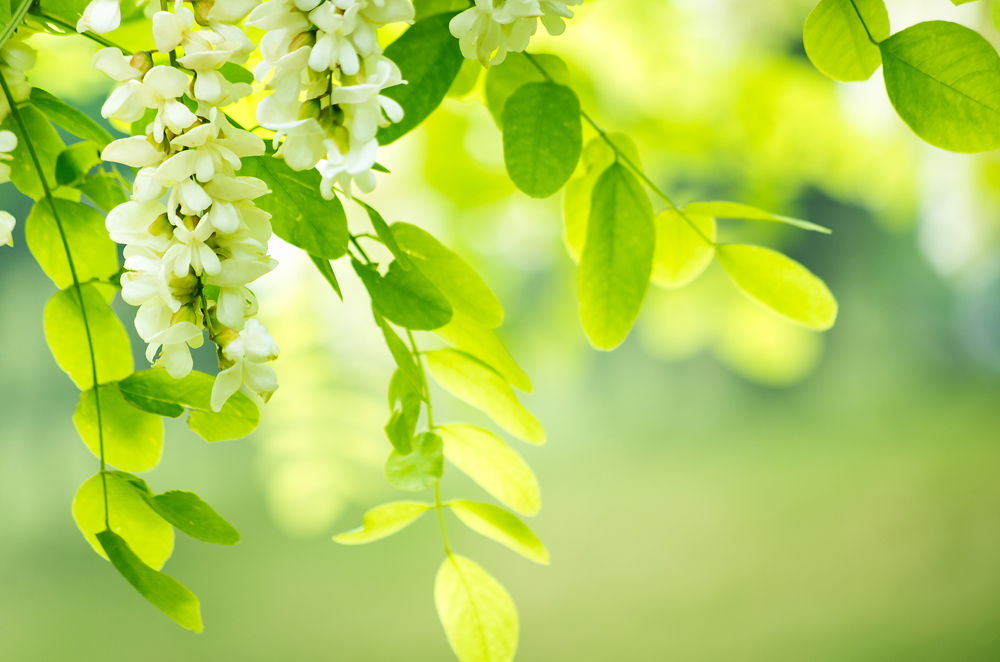
General Information:
This tall, semi-evergreen, native shrub or small tree has feathery, finely divided leaflets of a soft, medium green color. The slightly rough stems are a rich chocolate brown or grey, possessing long, sharp, multiple thorns. The small, yellow, puff-like flowers are very fragrant and appear in clusters in late winter then sporadically after each new flush of growth, providing nearly year-round bloom. The persistent fruits have a glossy coat and contain seeds which are cherished by birds and other wildlife.
Acacias are sometimes called wattles or golden mimosa. Lesniewicz says that the term mimosa applied to acacia is mistaken; Ainsworth labels his acacia a mimosa. Most acacias will bear golden flowers followed by legume pods, but getting acacia to flower in bonsai culture is reputedly difficult. They have compound leaves, are well-branched, and have nasty thorns.
Family:
Leguminosae
Lighting:
Acacias prefer full sun.
Temperature:
Acacias are warm weather trees. They must be wintered indoors, although they generally like it somewhat cool — under 64 degrees Fahrenheit.
Watering:
Acacia prefer moderate to slightly dry conditions; allow the soil to dry between waterings. However, the leaves will drop if the soil is allowed to get too dry. Simon and Shuster’s recommends daily misting.
Feeding:
Every 15-20 days during the growth period. Use a standard bonsai fertilizer, or a low nitrogen fertilizer to encourage flowering.
Pruning and wiring:
Wiring can be done from spring to autumn, every other year. Use caution when wiring, as the branches can be delicate. Acacias can become leggy quickly, and tend towards top growth at the expense of lower branches, which sometimes die back. It’s essential, therefore, to keep up with constant minor pruning. Acacias have compound leaves, so leaf pruning is futile.
Propagation:
Seed or cuttings. Cuttings should be taken in summer and supplied with bottom warmth and rooting hormone. Propagation from seeds seems a better bet, as acacias germinate in high numbers. The seeds do need some special treatment, however, due to their hard shells. Nick the bottom ends of the seeds with a knife or pair of clippers, then place the seeds in a bath of hot (not boiling) water. Allow them to soak for two days, then sow.
Repotting:
Every 2-4 years, depending on the age and vigour of the tree. Use a fast-draining soil mix, low in organic material. Reduce top growth in proportion to roots that have been pruned. Best to repot before acclimating the tree to warmer weather. They are easy to grow in any acid or alkaline soil.
Pests and diseases:
Aphids, flies, thrips, mites etc., also hard shelled insects like scale and woolly aphids. Occasionally anthracnose can infect leaves.
The following acacias are recommended for bonsai:
Acacia baileyana: Cootamundra wattle, golden mimosa very well suited to bonsai because of its small size: Gustafson recommends this acacia in particular for miniature bonsai. Likes cooler temperatures during the winter: 46 to 53 degrees Fahrenheit.
Acacia cavenia
Acacia choriophylla: tamarindillo, small tree, no spines In U.S. found only in the [Florida] Keys. Endangered, but may be available in S. Florida nurseries.
Acacia dealbata: silver wattle, mimosa, native to Tasmania and Australia, zones 8-10. It has silvery-grey foliage and can grow up to 60 feet in the wild. A popular florist’s shop offering.
Acacia farnesiana: golden mimosa, popinac, sweet acacia, perfume acacia, apparently, a very lovely smelling tree, used in the manufacture of perfume. Also quite small, it will gr ow to only 10 feet in the wild, with leaflets only 1/8 inch long. Better adapted to warm temperatures during the winter than A. baileyana, it is native to warm regions of America, zones 8-10.
Acacia karroo
Acacia pinetorium: pine acacia, small, sprawling shrub/tree with 1 cm paired spines. Common in pinelands scrub, Lee County south, in Florida.
Acacia smallii: Small’s acacia, Texas huisache, Shrub to 5 meters armed with pairs of VERY SHARP spines at the base of the leaves. It blooms from December-March with bright golden blossoms. In the wild they tend to be multi-trunk and about 15-20’ tall. It is found in Florida in the extreme western panhandle (Near Pensacola) and in Texas, so it may be in Alabama, Mississippi and Louisiana.
Acacia spectablis
Acacia tortuosa: Twisted acacia, shrub to small, spiny tree with zigzag branches. Common on shell mounds and along roadsides, S. Florida.
Acacia verticillata
Acacia wrightii: Wright’s acacia, Wright’s catclaw, uno de gato. The compound leaflets are smaller than the huisache and fold up at night (or during the day if it needs water) . As you might guess, the tree gets the catclaw name for its recurved spines. Found native in Texas, this acacia is reputed to be very vigorous, with plenty of back-budding.
Bibliography:
Simon and Schuster Guide to Bonsai
Bonsai in Your Home by Lesniewicz
Miniature Bonsai by Gustafson
The Art of Indoor Bonsai by Ainsworth
USDA Fact Sheet ST-5
Compiled by Sabrina Caine
Edited by Michael Johnson and Thomas L. Zane
Adenium obesum
Common Name:
Desert Rose
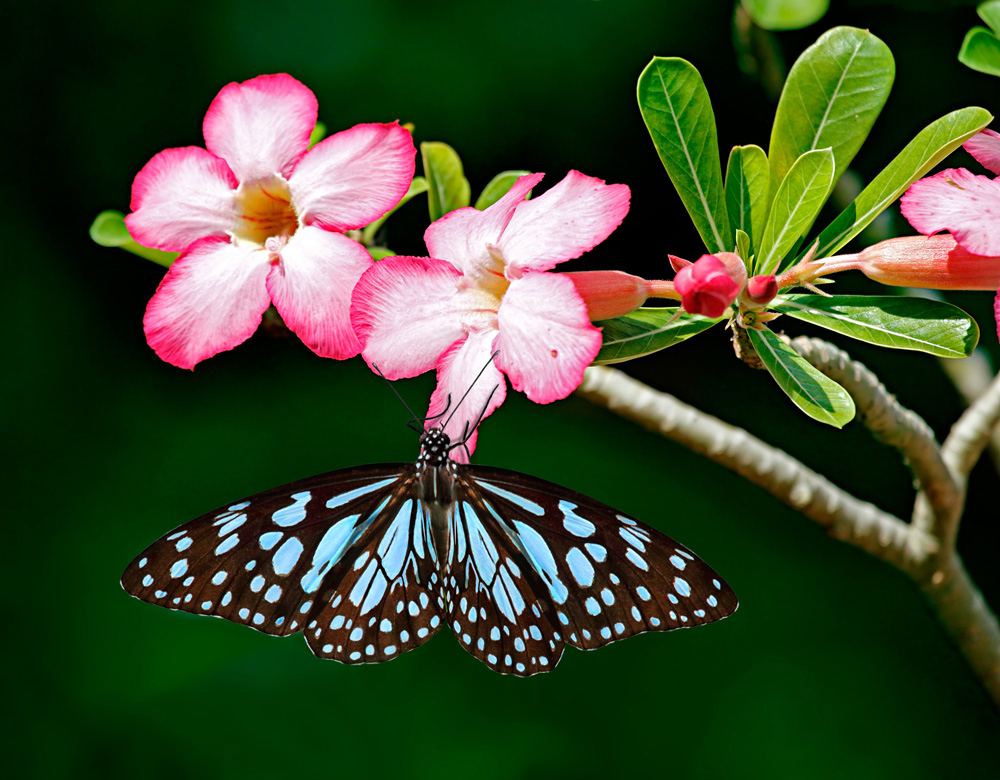
General Information:
The Desert Rose is a native of East Africa. It will grow from 6 1/2 to 10 feet in the wild. It has fleshy leaves and beautiful 2- inch pink open-trumpet shaped flowers. It is a succulent, and forms more of a bush than a tree. It will be an indoor bonsai in all but the warmest climates.
Lighting:
Needs lots of light and fresh air. Keep in a bright location in winter. In summer, if possible, move outdoors to a sunny or partly shaded location.
Temperature:
Growing temperature should not be below 54 degrees. However, in the winter, keeping it cool (between 54-61 degrees) which gives the plant a needed rest.
Watering:
Needs little water during winter, especially when kept cool. Increase water during growing and blooming periods. The total watering needed is similar to crassula, portulacaria and other succulents, and it will lose leaves if over-watered.
Feeding:
Monthly during spring and summer with liquid bonsai fertilizer. Fish emulsion is also reported to work well.
Pruning and wiring:
Style primarily by clip and grow. Do heavy pruning after the plant’s rest period. However, it bleeds profusely, so heavy pruning should be kept to a minimum. New shoots can be pruned regularly. The sap is poisonous, so clean hands after pruning, and avoid getting sap into open wounds.
Propagation:
Similar to jade trees - cuttings need to be dried for 3-4 days before planting in a sand-peat mix.
Repotting:
Root prune and repot every two years, after the winter rest period, in a mix of 2 parts bonsai soil, 2 parts peat, and one part sand. Can tolerate being pot-bound.
Bibliography:
“Bonsai in Your Home” by Paul Lesniewicz.
Compiled by Sabrina Caine
Arbutus sp.
Common Name:
Strawberry Tree
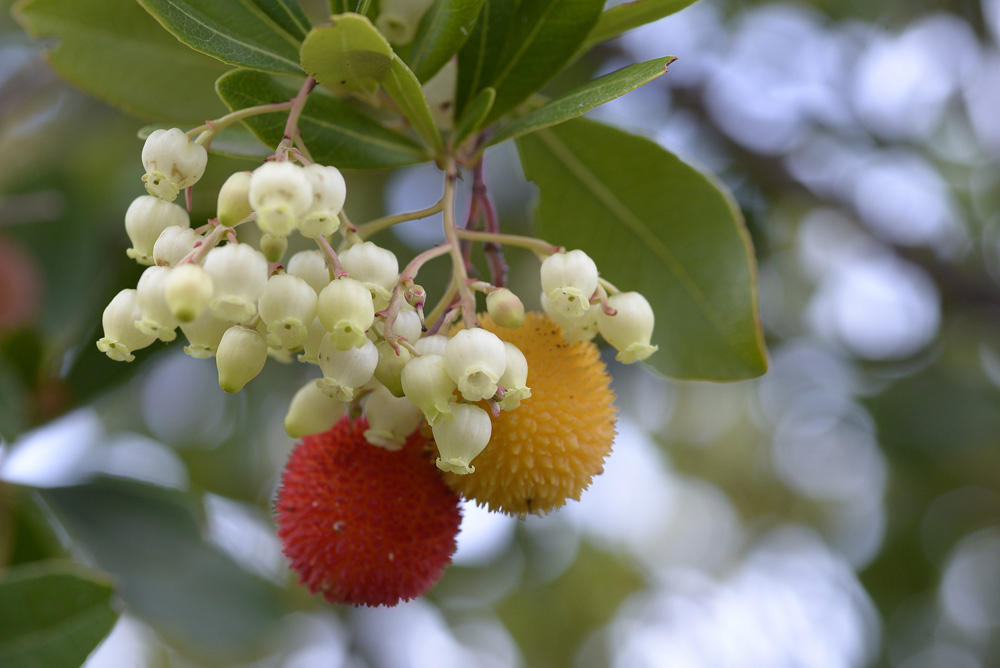
General information:
Most often seen as a multi-stemmed, rounded, evergreen shrub or small tree reaching 8 to 15 feet in height with an equal spread. Strawberry Tree is capable of reaching 20 to 25 feet in height, and makes a very attractive specimen tree when pruned to a short, single trunk. The trees take on a picturesque, somewhat twisted appearance over time, and exhibit dark, red/brown, flaking and shreddy bark accompanied by the lush, dark green, leathery, red-stemmed leaves. Growth rate is slow so trees over 20 feet tall are rare. Arbutus species are quite rare in bonsai use, but they adapt well to pot culture. The strawberry tree is an old European native, presumably brought by the Romans from the Mediterranean to England, while the madrone is an American native.
Family:
Ericaceae
Lighting:
Part shade, part sun, full sun, although some afternoon shade in midsummer may be necessary to prevent leaf scorch.
Temperature:
The tree is hardy in zones 8B through 11. The strawberry tree should not be exposed to temperatures below freezing when used for bonsai.
Watering:
Light to moderate, increasing during the heat of summer. Feeding: Every 20-30 days from early spring-mid-autumn, breaking for a month in midsummer. Miracid is recommended.
Pruning and wiring:
Prune new shoots back to 2-3 leaves during growth. Prune above a leaf facing in the direction you want new growth to extend. The flexible branches make wiring easy, although the bark will need to be protected. Wire from spring-autumn.
Propagation:
By seed. Needs three months cold treatment, then requires an additional three months to germinate. I’m still waiting.
Repotting:
Arbutus prefers an acid soil (although unlike most ericaceous plants, it can tolerate lime). 70-80% organic matter is recommended in the soil mix, with only 20-30% inorganic mater such as sand, grit or turface. However, a fast-draining soil is also preferred, so To achieve proper aeration of the soil, bark might be a useful soil component. Repot every 2-3 years in early spring. If the root pruning is drastic, removing all the leaves is suggested.
Pest and diseases:
There are no significant pests or diseases affecting this species.
Some species suitable for bonsai:
Arbutus menziesii: Pacific madrone - Unlike the strawberry tree, the Pacific madrone is a giant, growing upwards of 100 feet, with 2-6 inch leaves and 8 inch flower panicles. Its new shoots are bright green, deepening to orange, and eventually red as the bark thickens. The evergreen leaves are deep green with blue-white undersides, and the tree has red berries.
Arbutus menziesii ‘Pursh’.
Arbutus unedo: strawberry tree, Cain-apple, Cane-apple - Its species name is taken from the Latin phrase “unem edo,” which translates “I eat only one.” Cane-apple is a misnomer; Cain-apple refers to a legend that the berries were clots of Abel’s blood. Despite the fact that the berries look invitingly like strawberries, the fruit is incredibly sour. Supposedly hardy in zones 7-10, but best kept at temperatures above freezing. The strawberry tree is a small tree or bush, depending on the area of growth.
Bibliography:
Gustafson’s “Miniature Bonsai,”
Jahn (ed.) “The Simon and Schuster Guide to Bonsai,” Coats’ “Garden Shrubs and Their Histories.”
Mitchell’s “American Nature Guides: Trees”.
USDA Fact Sheet ST-85
Compiled by Sabrina Caine Edited by Thomas L. Zane
Averrhoa
Common Name:
Carambola
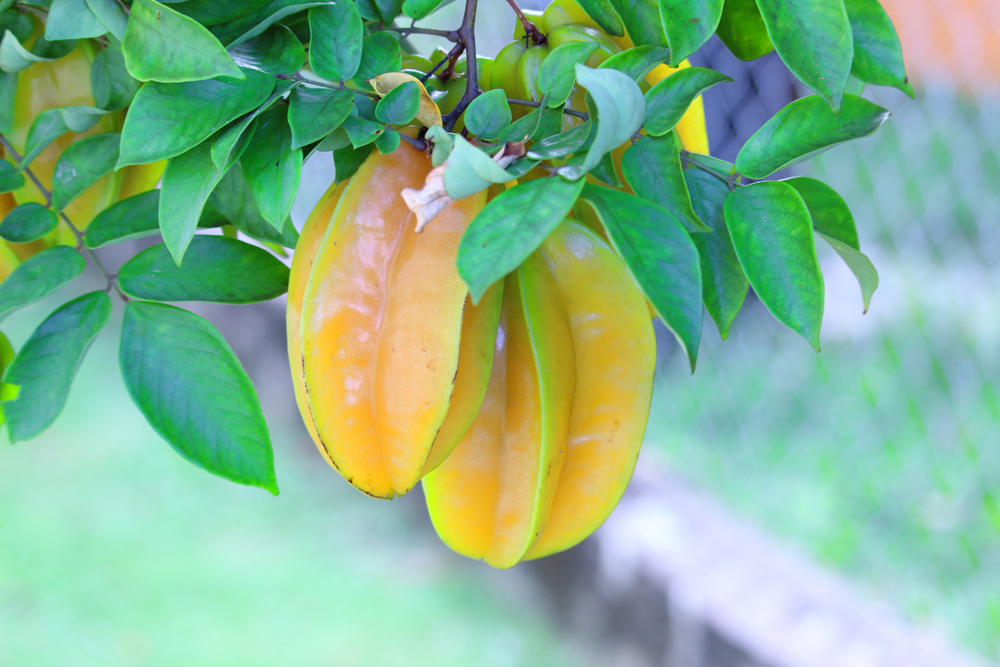
General Information:
Averrhoa is named after Averrhoes, an Arabian physician. The most popular Averrhoa is the carambola or star fruit. A favorite in fruit salads, the carambola is just beginning to be used for bonsai. It is a small, tropical tree which grows to about 25 ft. Native to Malaya and S.E. Asia, it has dark green, evergreen compound leaves of 5-11 leaflets, small, rose coloured flowers and fleshy five-lobed fruit. The plant will flower and fruit 2-4 times yearly.
Lighting:
Will grow in semishade, although they prefer full sun. Temperature: Young trees should never go below freezing. Older trees can withstand temperatures down to 28F.
Watering:
Likes generous watering, although Averrhoa can be damaged by water-logged soil.
Feeding:
Supplement liquid bonsai food/ half-strength plant food with trace minerals.
Pruning and wiring:
No information available, as the use of carambola in bonsai is still in the experimental stage. Carambola is a naturally upright tree, so formal/informal upright styles are logical choices.
Propagation:
Lesniewicz lists Averrhoa as a tree which can be grown from a seed obtained from a grocery store fruit.
Repotting:
No information on time/frequency of repotting, although most tropicals like to be transplanted during warm weather. Averrhoa prefers acid soil, pH 5.5-6.5, although it will tolerate most soil types. It is not salt tolerant, however.
Pests and diseases:
No serious pest problems, although caterpillars, mites and scale are occasionally reported.
Bibliography:
Lesniewicz’s “Bonsai in Your Home”
“Florida Fruit” by Lewis Maxwell
Florida Landscape Plants, Revised Edition, John V. Watkins, et. al.
Compiled by Sabrina Caine and Thomas L. Zane
Bougainvillea glabra
Common Name
Bougainvillea
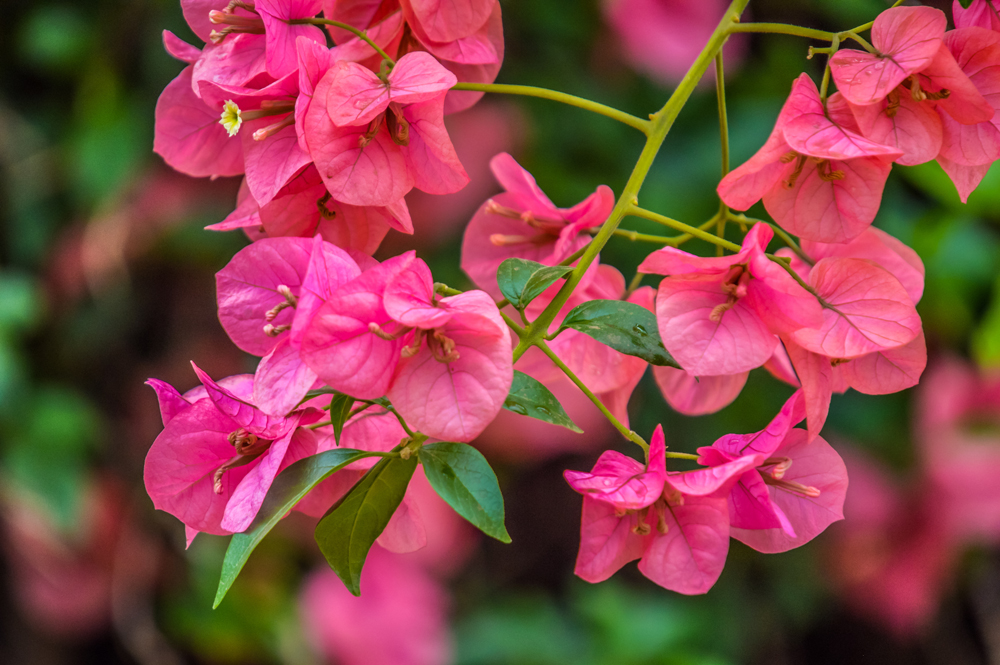
General Information:
Bougainvillea, named for a French navigator, is a native of South America and is grown extensively in the warmer climates of the United States. It is a member of the Nyctaginaceae family with close relatives being the four o’clock and the sand verbena. Bougainvillea is an evergreen vine which is just as happy spreading horizontally or hanging downwards as it is climbing upwards, it makes itself at home in almost any situation. It can be grown as a hedge, groomed as a ground cover, pruned as an espalier, trained as a tree or contained in a pot in a variety of shapes. Its trunk tends to be gnarled. Bougainvillea is ideal for bonsai. Red, violet, orange, yellow or white bracts appear on the ends of new growth.
Bougainvillea are available in nurseries and from bonsai specialty growers. A good source is from old gardens being redesigned and from trash piles where a frustrated homeowner has thrown the thorny plant.
They flower most heavily in winter and early spring, but some plants put forth scattered clusters all year. The colours are found in tones of purple, lavender, carmine, scarlet, red, pink, orange, yellow and white. Single and double flower forms are available. Double forms tend to carry their blooms near the end of the stems rather than distributing them evenly over the plant. The colourful, papery “blooms” are not flowers; they are bracts. The true flower is white, trumpet shaped and almost unnoticeable within the bracts. Bougainvilleas are available in a variety of species, each having its unique characteristics.
Lighting:
Full sun.
Temperature:
Being a warm weather plant, they must be provided winter protection. They can usually tolerate die back from a freeze, but will withhold blooms for awhile.
Watering:
Sparse to light watering and good drainage.
Feeding:
Fertilize once in the spring with a low nitrogen fertilizer and maybe once again in the fall. The old established method of forcing flowers is to withhold water to a point of causing severe stress to the plant. Research at the University of Florida has found that plants flower best when given high nitrogen fertilizers and short day lengths (15 hours of darkness within every 24 hour period).
Pruning and wiring:
The bougainvillea takes well to pruning; a useful attribute in styling bonsai. Because bougainvillea generally blooms on new growth, each branch, as blooms begin to fade, should be cut back to a point somewhat shorter than the desired length. Seal all cuts to prevent rot. If rot is detected on a collected specimen, cut it out completely.
Propagation:
Bougainvillea may be grown from air layers, root cuttings and branch cuttings. Young shoots, a few inches in length, should be placed in sandy soil with bottom heat and moisture. Half-ripened or old wood cuttings in six to twelve inch lengths may be rooted April to June.
Repotting:
Repot in Spring. Do not prune the roots too severely.
Pests and Diseases:
Caterpillars, aphids, scale, greenfly and mineral deficiencies (chlorosis). Care must be taken that fungus does not invade the tree; reduced humidity and a preventive spraying of fungicide will help greatly.
Species used for bonsai:
Bougainvillea brazilinensis: ‘Pink Pixie’ bougainvillea.
Bougainvillea buttiana ‘Golden Glow’ - Has bright yellow bracts which fade to apricot.
Bougainvillea buttiana ‘Louis Wathen’ - orange bracts.
Bougainvillea buttiana ‘Mrs. Butt’: - crimson bracts.
Bougainvillea buttiana ‘Orange King’.
Bougainvillea glabra: paper flower, lesser bougainvillea - the most common species used for bonsai. It has shiny green, slightly hairy leaves and magenta colored bracts.
Bougainvillea glabra ‘Magnifica’ - rose pink bracts.
Bougainvillea glabra ‘Snow White’ - white bracts.
Bougainvillea peruviana - rosy pink bracts.
Bougainvillea spectabilis - pink or mauve bracts.
Bibliography:
“Beautiful Bougainvilleas”, Florida Bonsai, XI, 4:37-40. “Bougainvillea”, by Marge Pierce, Florida Bonsai, XVII, 2:18. “Bougainvillea”, by Broward County Agricultural Agents’ Office, Florida. “Notes from Lecture/Demonstration by Maria Elena de Duran”, by Elyse Van Dyke, Florida Bonsai, XXII, 3:2-5.
Interview with Mary Madison, April 27, 1993 by Sena H. Zane.
Florida Bonsai X:1:45
Florida Landscape Plants by Watkins pg.148
Internet Bonsai Club version compiled by Sabrina Caine.
Compiled by Thomas L. Zane
Bucida sp.
Common Name:
Black Olive
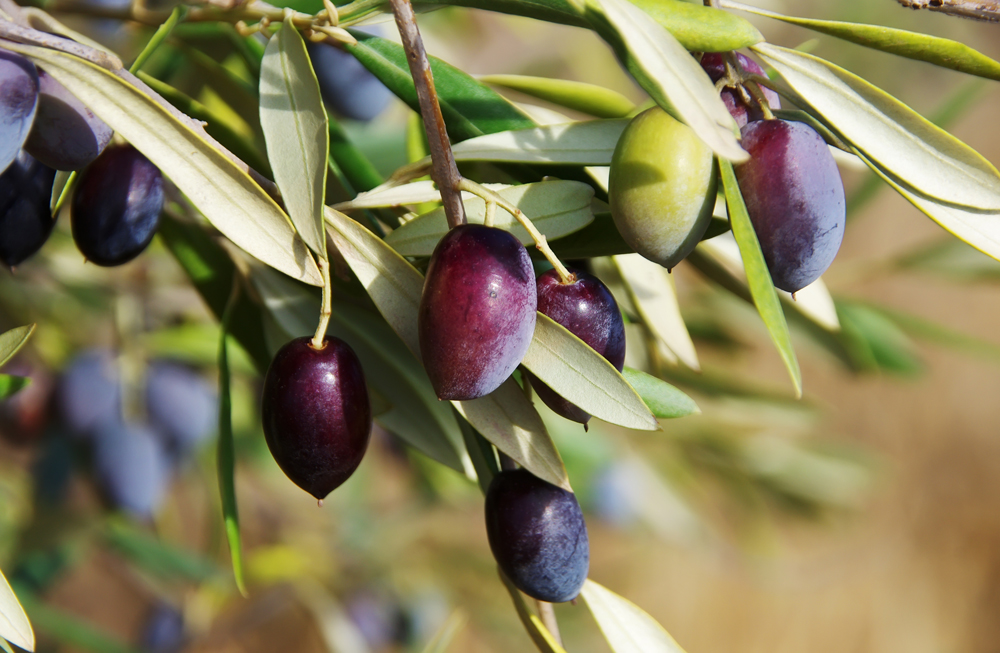
General information:
Though commonly called ‘black olive tree’, this native of the upper Florida Keys (some consider it native, others do not) is not the edible olive we know and love, but does produce a small, black seed-capsule. Black olive is a 40 to 50-foot-tall evergreen tree with a smooth trunk holding up strong, wind-resistant branches, forming a pyramidal shape when young but developing a very dense, full, oval to rounded crown with age. Sometimes the top of the crown will flatten with age, and the tree grows horizontally. The lush, dark bluish-green, leathery leaves are two to four inches long and clustered at branch tips, sometimes mixed with the 0.5 to 1.5-inch-long spines found along the branches.
Bucida comes highly recommended by Lesniewicz, who says, “This delicate tree from Florida and the Caribbean grows into a bonsai almost by itself.” An unusual bonsai subject which may increase in popularity as an indoor tree. It is very salt tolerant, making it a good choice for bonsai lovers by the sea.
Family:
Combretaceae
Lighting:
Full sun - its natural environment is the hottest parts of Florida and the Caribbean.
Temperature:
Grows well in zones 10B through 11. Do not expose to freezing weather or better yet, temperatures below 40 degrees. A tender plant which has been grown successfully as an indoor bonsai.
Watering:
Likes to be well-watered and should not be permitted to stay dry. Feeding: Likes frequent fertilization which promotes vigorous growth.
Pruning and wiring:
New shoots need to be shortened only by a little. It is best to pinch them back. In nature, the Bucida is generally windswept, which makes this an excellent choice for bonsai style. The plant’s natural growth makes it ideal for bonsai. It changes direction at every internode, making a bend of 25 to 35 degrees, which can be incorporated into the styling.
Propagation:
From cuttings, as seeds are difficult to germinate. To propagate from cuttings, hard wood won’t work, even under a mist system. Soft wood ones will, but one rarely gets a soft wood cutting longer than 2 inches.
Propagation from seed. The tiny flower progresses to green seeds, then tan and then brown in about 2 months. Gather the seeds as soon as they fall, for they are more vital and willing to germinate in the first ten days after they ripen. Seeds should be planted in large community pots in a well drained mixture of vermiculite, peat and loam, and allowed 25 to 35 days for germination. Be patient, for they grow very slowly. When they are 2 inches tall, transplant them from the community pot to individual pots. Cover each pot with a plastic bag for 5 days and put in the shade. Keep in the shade for 3 to 4 weeks, being careful to keep them moist, but watch for and avoid powdery mildew. Once they are growing well, if you wish to force them to grow faster and taller than their usual 2 inches a year, bend down the branches lower than the growing tip. (Quoted from page 20, Vol 4, No. 4 of “Florida Bonsai” magazine.)
According to tropical bonsai grower, Mary Miller:
“The best way to grow them from seed is to allow the seed to drop directly from the tree into a tray of soil without touching the seed. They rarely grow from cuttings with any size.
They can be grown from ‘tip’ cuttings (two or three clusters of leaves from the end of the branch). However, tip cuttings are best grown with an automatic mist system. Even then, many do not survive.”
Repotting:
Repot in late winter, pruning roots only moderately. Use a fast draining bonsai soil with a high sand and lime content.
Pests and diseases:
No pests or diseases are of major concern but occasionally bothered by sooty mould and bark borer. Eryphide mites cause galls but no control is needed.
Some species suitable for bonsai:
Bucida buceras: Bahama black olive
Bucida spinosa: spiny black olive, dwarf spiny black olive
Bibliography:
“Florida Bonsai” magazine, Vol 4, No. 4, page 20. USDA Fact Sheet ST-102
E-mail from Mary Miller, South Florida.
Buxus sp.
Common Name:
Boxwood
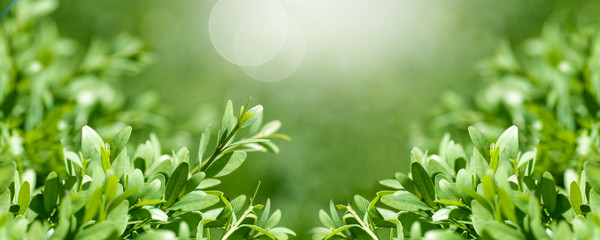
General Information:
Boxes are densely branched shrubs native to Europe and Asia. A hedge steeped in history, box sprigs have been found in the tombs of Romans. It is widely used as a hedge plant, and is a common topiary subject. Most varieties of box are marked by a distinctive “foxy” smell which some find distasteful. The box is an important plant commercially, as it is one of the few woods heavier than water, and is thus used for making woodcuts and precision instruments.
Most boxes are grown as hardy bonsai, but the Harland box has been successfully grown as an indoor plant. Box is very popular for bonsai due to its tiny leaves and flowers and its tolerance for extensive pruning and shaping. One note of caution: box leaves are poisonous, and eating even a few can kill a small pet.
Lighting:
Box is not particular. Sun or shade both work well. Buxus harlandii prefers shade or semi-shade, and has an indoor light requirement of only 800 Lux.
Temperature:
Hardiness depends on variety, but boxwoods need protection from frost and cold winds even when grown in the proper climate. In the summer, box appreciates fresh air.
Watering:
Moderate, but does not like wet soil. Allow the box to dry somewhat between waterings.
Feeding:
Every two weeks during growth. Harland Box, every 20-30 days. Use a liquid bonsai fertilizer with one application of pulverized organic fertilizer during active growth. Fertilize with general purpose fertilizer.
Pruning and wiring:
Growth on the dwarf varieties can be very slow. Box can be wired at any time. It is tolerant of radical treatments, such as jin, shari and being grown root over rock. Fine bonsai material may frequently be pillaged from old hedges. Leaves may turn reddish brown in winter. Control shape by thinning and by pinching off most of unwanted new growth.
Propagation:
By division in spring, or from hardwood cuttings taken in late summer or autumn. Air-layering is also possible.
Repotting:
Every two years. Spring is the best time, but as box is a broadleaf evergreen, there is more leeway with appropriate times to repot than with deciduous trees. It can be repotted in summer and autumn if need be, but avoid repotting during very hot weather or during a growth spurt. Use basic bonsai soil. Box dislikes acid soil, and the use of limestone in the soil mix or adding an occasional dose of lime to the soil is recommended. Soil must be well drained.
Pests and diseases:
Nematodes, mites and leaf miners, blackfly, greenfly, and red spider mites. Although box is very disease resistant, honey fungus and rust are sometimes encountered.
Species useful for bonsai:
Boxwood
Buxus harlandii: Harland box - A native of Taiwan, the Harland box can grow to 33 feet. Its leaves are thinner than other box species. This box doesn’t like cold,and should not be exposed to temperatures below 37F, but it has been grown successfully as an indoor plant. If the temperature goes above 65F, the Harland box enjoys a daily misting, and the amount of food should be reduced. During the winter, keep the tree at a temperature below 65F; between 46F and 50F is best.
Buxus microphylla: Japanese box - Grows to 5 feet, and has evergreen leaves under 1 inch long. It tolerates both sun and shade. All B. microphylla varieties are scentless. It grows best in zones 5-8. Buxus microphylla ‘Compacta’: dwarf boxwood, Kingsville box. Quarterly spray with Black Leaf 40 mixed with soap.
Buxus microphylla ‘Koreana’: Korean boxwood - the most hardy box, it grows in zones 4-8, but expect the foliage to brown in the winter. It is a low, spreading variety, growing to only 3 feet.
Buxus microphylla ‘Morris Midget’: Morris Midget boxwood.
Buxus sempervirens: common box, English box - this box can grow to 25 feet in a mild climate, and therefore appears as both hedges and small trees. Its evergreen leaves grow to 1 1/2 inches. This box is hardy in zones 6-8 with some winter protection at the upper end of the range, although there is a cultivar, ‘Vardar Valley’ which is hardy to zone 5. This is a long-lived plant, and historic boxes from Colonial days are still alive in Virginia.
Buxus sinica - A native of China, similar to other small boxes.
Bibliography:
Tomlinson’s “Complete Book of Bonsai”
Samsons’ “Creative Art of Bonsai”
Resnick’s “Bonsai”
Ainsworth’s “Art of Indoor Bonsai”
Lesniewicz’s “Bonsai in Your Home”
Species information in general is from Mitchell’s “American Nature Guides: Trees,” “The Hearst Garden Guide to Trees and Shrubs,” and Coats’ “Garden Shrubs and Their Histories.”
Florida Bonsai XX:4:33
Florida Landscape Plants by Watkins, pg. 233
Compiled by Sabrina Caine and Thomas L. Zane
Calliandra haematocephala
Common Name:
Dwarf Powderpuff
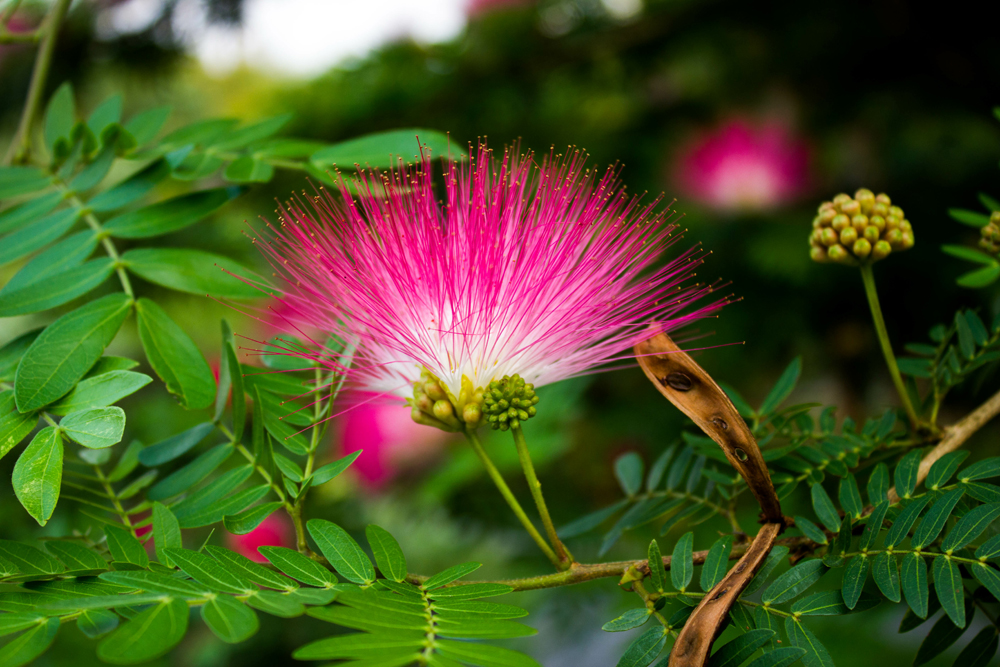
General Information:
An evergreen tropical plant native to the Americas and Asia, the powderpuff is named after its whimsical red or pink flowers. Other interesting features are the flower buds, which resemble raspberries, and the leaves, which close up at night or during drought. Besides their fascinating appearance, Calliandras enrich an outdoor display with their ability to attract hummingbirds. Fruit is pod shaped, 3 to 6 inches long. Not tolerant of salt.
Family:
Leguminosae
Lighting:
Enjoys a light and airy spot - 2000 Lux, if possible. Full sun if outdoors - it thrives as a landscape plant in Florida.
Temperature:
Zones 9b - 11. Prefers winter temperatures between 59-64 degrees. Can be kept indoors year-round, if necessary, but best results are achieved placing the plant outdoors in warm weather. Will not withstand frost.
Watering:
Keep soil evenly moist. Requires less water if kept in a cool location during winter. Likes high humidity. Will tolerate occasional drought.
Feeding:
Use a liquid bonsai fertilizer every two weeks, spring-summer. May bloom several times during a season. A high phosphorous fertilizer will increase flower production.
Pruning and wiring:
Prune during growth in spring and summer. When a shoot has developed 5-6 new leaves, prune back to 1-2. The plant may be wired, but older branches become brittle. It is best to wire only branches that are just beginning to lignify, in summer. Bark is thin and may easily be damaged.
Propagation:
From seed or cuttings taken during the growing season. Repotting: Every two years, in spring, using well-drained, somewhat sandy and slightly alkaline bonsai soil.
Pests and diseases:
Aphids, caterpillars, mites.
Bibliography:
Florida Bonsai VI:2:25-26
Lesniewicz’s “Bonsai in Your Home”
“Florida Landscape Plants” by Watkins and Sheehan
US Department of Agriculture, Forest Service, Fact Sheet ST-108
Compiled by Sabrina Caine and Thomas L. Zane
Camellia sp.
Common Name:
Camellia

General information:
The most famous member of the Camellia family is C. sinensis, the plant from which we get tea. Tea can be made from other Camellia species, but its flavor is not as desirable. But these other Camellias make showy bonsai, with beautiful flowers and shiny evergreen leaves. They can be grown outdoors in warm climates, and are often grown as an indoor bonsai when they cannot be kept otherwise. Most Camellias flower from fall through early spring.
When flower buds begin to appear, they are delicate. They may fall off if the plant is moved, or if there is too great a variation in temperature or light.
Lighting:
Partial shade to full sun.
Temperature:
Zone hardy to zones 8 or 9, depending on species. Never below 10F. Can be grown successfully indoors, but needs cool nights (between 40-60F, but 50-59F is best) in winter. Likes ventilation, but should be kept sheltered from strong winds.
Watering:
Moderate, but as the root hairs are very fine, the plant CAN NOT be allowed to dry completely. Increase watering during active growth, and when the plant is in bloom. It is best to use decalcified (soft) water if possible. Likes an occasional misting, but do not mist while in bloom or the flowers will wither.
Feeding:
Every 2-3 weeks, spring-autumn. Use a fertilizer such as Miracid, formulated for acid-loving plants, at half- strength. Do not fertilize while the plant is in bloom. The plant may also benefit from administering chelated iron 2-3 times a year.
Pruning and wiring:
Wire from late spring to autumn, taking care to protect the delicate bark and branches. Do not wire while the plant is setting buds, and wire only lignified shoots. Young plants should be pruned after the shoots have developed 4-6 leaves, trimming back to 2-3 to establish branching. Pruning of established bonsai is best done following flowering, pruning only once and then allowing new shoots to set buds.
Propagation:
By seed, soaking in warm water, for 24 hours, and then removing the outer casing. Fast germinating. Also hardwood cuttings can be taken from winter-summer, although rooting is slow and difficult. The use of rooting hormone and bottom heat of 72F is recommended. Air-layering is possible.
Repotting:
Every 2-4 years in late winter or spring, following blooming. Likes acidic, humus rich soil. The roots are superficial and fine, so drastic root pruning is not recommended, and it is best if only 10% of the roots are removed.
Pests and diseases:
Camellia is vulnerable to aphids, red spider mites sooty mould, weevils and chlorosis.
Some species suitable for bonsai:
Camellia cuspidata - Reputed to be somewhat more hardy than the other members of the species, this plant has abundant small white flowers.
Camellia japonica: camellia, common camellia - This is the most widely grown species. Although best known as a shrub, it can grow into a tree over 30 feet tall. It has oval leaves up to 4 inches, and most generally grows in zones 7-9 although some cultivars have been grown as far north as southern New York. It is best known for its spectacular blooms, which occur in late winter or early spring, and can be white, pink or red. There are numerous cultivars, generally selected for their various flowers.
Camellia maliflora - A small flowered variety.
Camellia reticulata - A small-leaved, shade-tolerant Camellia. It is hardy to zone 9. The white, pink or red flowers can be found both single and double. Aggressive pruning is needed to promote branching. Camellia sasanqua: Sasanqua camellia - Smaller than japonica, this Camellia has two inch leaves and flowers, and grows only to 12 feet. Like C. japonica, it is hardy in zones 7-9, and has many cultivars. Camellia sinensis: tea, tea plant, tea bush - A white flowered variety, its small leaves and flowers make it better proportioned for bonsai than other Camellia species.
Camellia taliensis
Camellia tsaii - another small flowered Camellia.
Camellia vernalis: Vernalis camellia
Compiled by Sabrina Caine
Caragana sp.
Common names:
Caragana, Peashrub
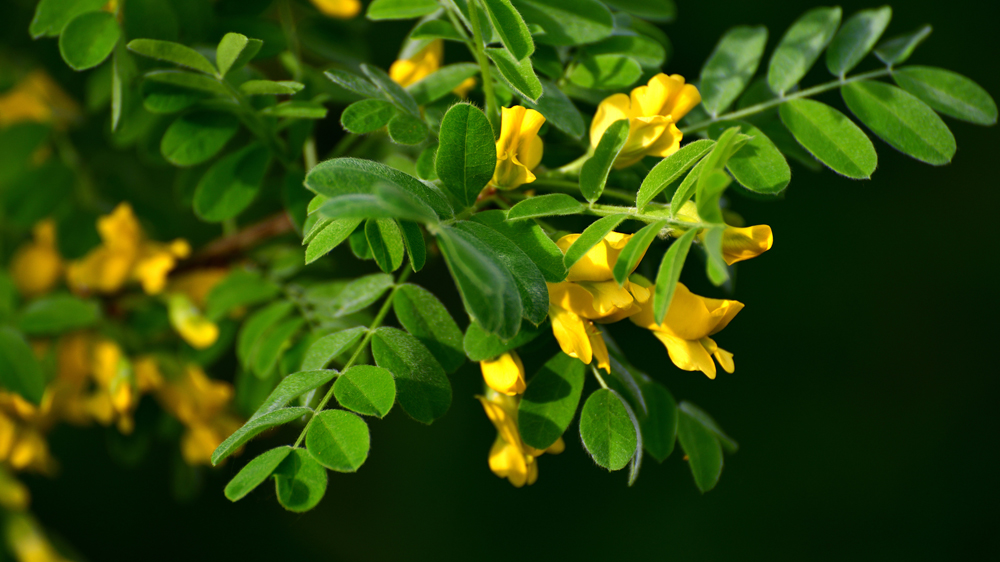
General information:
The peashrubs are unusual as bonsai, but they have much to recommend them. They have tiny compound leaves like Acacia or Texas Ebony (Caragana also belongs to the Leguminosae) and grow into delicate and graceful trees. They have the added plus of being extremely resilient, capable of growing in poor soil and freezing, windy conditions, but equally capable of growing in higher temperatures. In fact, Caragana make good indoor bonsai!
Lighting:
Full sun. If indoors, place in a bright spot.
Temperature:
C. arborescens is extremely hardy. C. chamlagu needs a milder climate, and is semi-evergreen. Caragana can be used as indoor bonsai.
Watering:
Moderate during growth. Keep soil fairly dry in winter. If the leaves turn yellow and fall, the tree is probably being over-watered.
Feeding:
Every 2-3 weeks during growth, using liquid bonsai food or half- strength general purpose fertilizer.
Pruning and wiring:
Suitable for all sizes, and all styles except formal upright. Shorten new shoots as they develop. The tree can be radically pruned in winter - it buds back on old wood rapidly. As with all Leguminosae, beware of the thorns! Wire lignified shoots, but check wire after six weeks.
Propagation:
In spring, soak cold pre-treated seeds until they open before sowing. They are reputedly very easy to germinate. Softwood cuttings may be taken in summer.
Repotting:
Every two years in winter, or early spring before bud burst, using fast-draining soil. The trees will grow in very poor soil, and seem to be salt tolerant.
Pests and diseases:
Greenfly, red spider mites, mildew. Yellowing leaves indicate over-watering.
Some species suitable for bonsai:
Caragana arborescens: Chinese pea tree, Siberian pea tree - Native to the harsh climates of Siberia and Manchuria, this species grows in a narrow, upright habit to 20 ft. It has pale yellow flowers and fruit which resembles peas, hence the name. Zones 2-4.
Carissa sp.
Common Name:
Natal plum
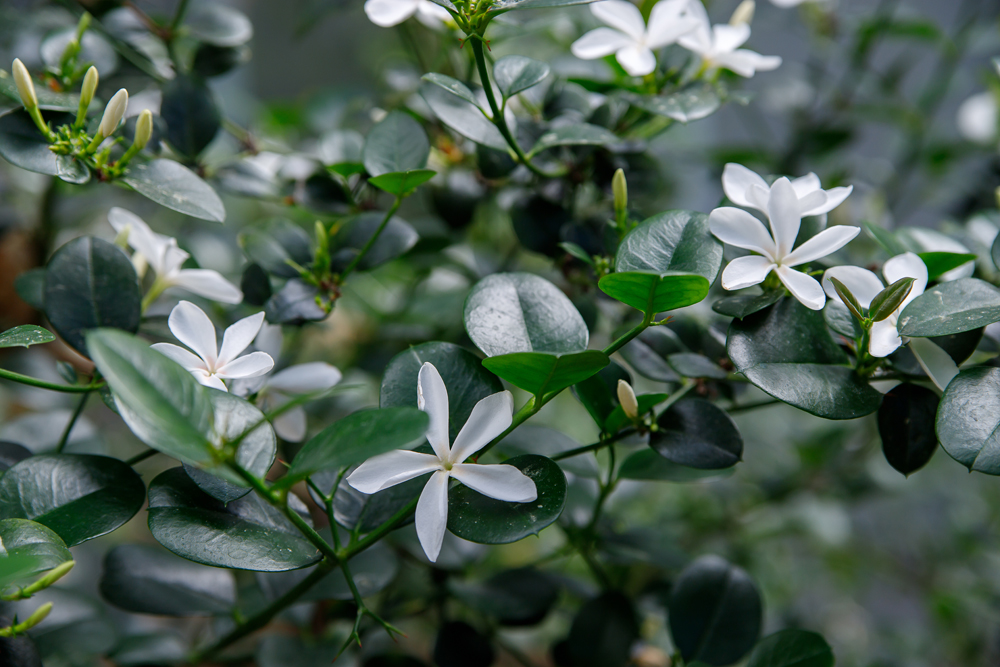
General Information:
An evergreen, small thorny bush which develops white and pink flowers and edible, dark red fruit. There is little information on this plant in the bonsai literature, which is surprising, as it is readily available and becoming quite popular. In addition, Natal plum is a strong plant which tolerates almost any abuse. It can be grown under almost any conditions (except freezing cold), but when grown under optimum conditions of high heat and humidity, growth is extremely rapid and the rooting of cuttings an almost sure success.
Lighting:
Likes plenty of light, at least four hours of direct sunlight daily.
Temperature:
Needs warmth in winter. Prefers night temperatures between 50-65F and day temperatures of 68F or higher. Can successfully be grown indoors, but the use of a nearby fan to reduce the likelihood of fungal infestation is recommended.
Watering:
Moderate. When grown indoors, use of a moisture tray to maintain humidity is recommended.
Feeding:
Every two weeks during growth, using Miracid. Reduce feeding to monthly during winter.
Pruning and wiring:
Do major pruning in mid to late spring, after flowering. Do not prune all the green foliage off a branch, as this will cause the branch to die back. Otherwise, buds back with vigour. Continue to prune as necessary during growth. Carissa grows rapidly, especially in hot climates, so pruning may be frequent. These trees make good informal uprights or cascades. Older branches can be brittle, so use caution when wiring. Check wiring often, due to the rapid growth of the plant.
Propagation:
Roots readily from cuttings, especially lignified ones. Will root when placed in a glass of water.
Repotting:
Lesniewicz recommends transplanting in fall or winter only, but posters to RAB indicated that repotting in mid-spring to midsummer is OK. Keep root pruning to a minimum. Use fast draining soil. Limit water until the plant is firmly established to reduce risk of root rot.
Pests and diseases:
Prone to fungal infestation. Spider mites and scale are occasional problems. On the whole, a very strong plant.
Some species suitable for bonsai:
Carissa grandiflora: Natal plum.
Carissa macrocarpa: Natal plum, Christ’s thorn.
Compiled by Sabrina Caine
Carmona microphylla or Ehretia microphylla
Common Name:
Fukien tea
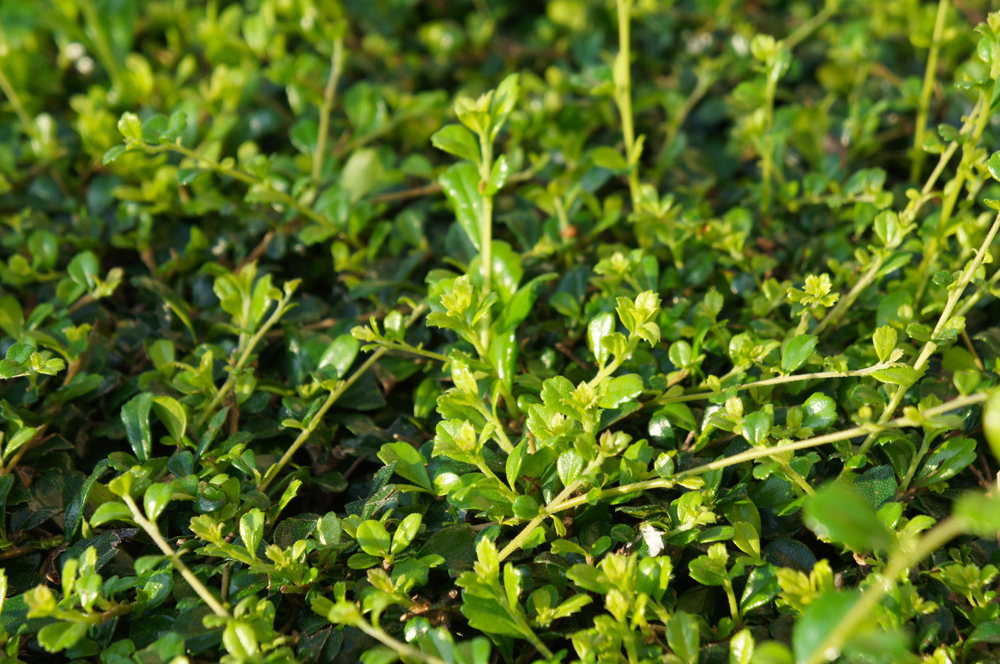
General Information:
A very small genus of tropical tree which was once referred to (and still often listed as) Carmona. The most widely known Ehretia species is the Fukien tea, a tropical shrub originating in Southern China and other parts of Southeast Asia. It is very popular for bonsai in China, but not a traditional favourite in Japan. It can be grown outdoors in warm climates, but is quite popular as an indoor bonsai. Ehretia anacua, a recent addition to bonsai, is more resistant to heat and drafts.
Lighting:
Likes a bright position (1000 Lux). Most sources recommend only about an hour of direct sunlight daily, although success has been reported growing it in a sunny position all day.
Temperature:
Ehretia prefers temperatures between 60-72F in winter, although occasional dips into the forties produce no ill effects. In the summer, most books recommend protection from extreme heat, although the plant has been successfully grown in sweltering Texas weather. Ehretia does not like drafts.
Watering:
Keep well watered, reducing watering only slightly in winter. Never allow Ehretia to stand in water, or allow the soil to dry out completely. Frequent misting will discourage spider mites, but will apparently encourage mealy bugs. Choose your poison! Ehretia anacua, a Texas native, is more resistant to drafts, and likes to dry out a bit between waterings, but should not be allowed to become bone dry.
Feeding:
Every two weeks during growth, every four-six weeks in winter. Use bonsai food or half strength plant food. Do NOT use Miracid. Fukien tea does not like to be overfed; Lesniewicz suggests watering well before feeding to avoid root burn. Feeding weekly has been reported with success - I would guess that frequency of feeding can be increased as long as the strength of the food is kept diluted.
Pruning and wiring:
Prune new shoots after six to eight leaves have appeared. The leaves are tiny enough that leaf pruning should not be necessary. Can be wired any time during the growing season, but it is generally styled through pruning alone. Wire should not be left on over three months. Its small leaves and fine branch ramification make it ideal for miniature bonsai.
Ehretia anacua does not ramify as well, and its stiff branches make wiring dangerous. It has a strong tendency towards apical growth, and needs constant pinching of topmost branches. It buds back readily on old wood, and is suitable for any style, although broom and literati are especially nice.
Propagation:
By seed or softwood cuttings in spring or summer. Cuttings root more readily if given bottom heat.
Repotting:
Every 2-3 years, in early spring. Reduce water after root pruning. Bottom heat helps stimulate new root growth. Use basic soil mix.
Ehretia anacua is a faster grower than other Ehretia species, and may need yearly repotting in hot climates. It may be repotted spring-fall, but should be defoliated in the heat of summer. Beware of snapping thick roots - they are more brittle than they appear.
Pests and diseases:
Aphids, scale, chlorosis, mealy-bugs, snails. Red spider mites find this plant a special treat, and will attack it over any other plants in the area. Unfortunately, Fukien tea is very sensitive to insecticides, and Diazinon will kill the tree. Use the weakest insecticide possible that will address a particular problem, or if possible, employ predator insects. Will drop leaves if under-watered. Over-watering results in yellow, sickly leaves. It is quite sensitive to sudden changes in temperature and lighting. Ehretia anacua is more resistant to pests, with leaf miners being the only reported problem.
Some species suitable for bonsai:
Ehretia anacua - Rick describes this tree: 15 to 40 feet tall with a straight, fluted trunk having thick, furrowed dark brown bark. The leaves are rounded, dark green, and extremely rough, like sandpaper. The tree is listed as evergreen but colder temperatures will cause them to shed their 3” leaves. Depending on rainfall, the tree will flower, with clusters of white blooms, from early spring through late fall. The flowers are followed by yellow to red, two-seeded berries. Ehretia buxifolia (also called Carmona microphylla, Ehretia microphylla): Fukien tea, Philippine tea - Well loved for bonsai due to its tiny, shiny green leaves, tiny white flowers throughout the year, and red berries.
Ehretia dicksonii - a deciduous species of Ehretia. Rare as bonsai. Ehretia thrysiflora - Another deciduous species of Ehretia which deserves wider use in bonsai.
Bibliography:
“Bonsai Tips & Hints: The Works About Fukien Tea”, by Jean C. Smith, Florida Bonsai, VII, 2:45-47.
“Fukien Tea - A Tree Worth Knowing”, by Jean C. Smith, Florida Bonsai, XIV, 2:16 19
Ainsworth’s Art of Indoor Bonsai,” Jahn (ed.) “The Simon and Schuster Guide to Bonsai,” Lesniewicz’s “Bonsai in Your Home,” Owen’s “Bonsai Identifier,” the Samson’s “Creative Art of Bonsai,” and Tomlinson’s “Complete Book of Bonsai,” a post by Matthew Ward which compiled information he found on rec.arts.bonsai, and several posts by Rick from S-most Texas.
Compiled by Sabrina Caine and Thomas L. Zane
Dizygotheca elegantissima / Polyscias fruticosa
Common Name:
False Aralia (dizygotheca), Ming aralia (polyscias)
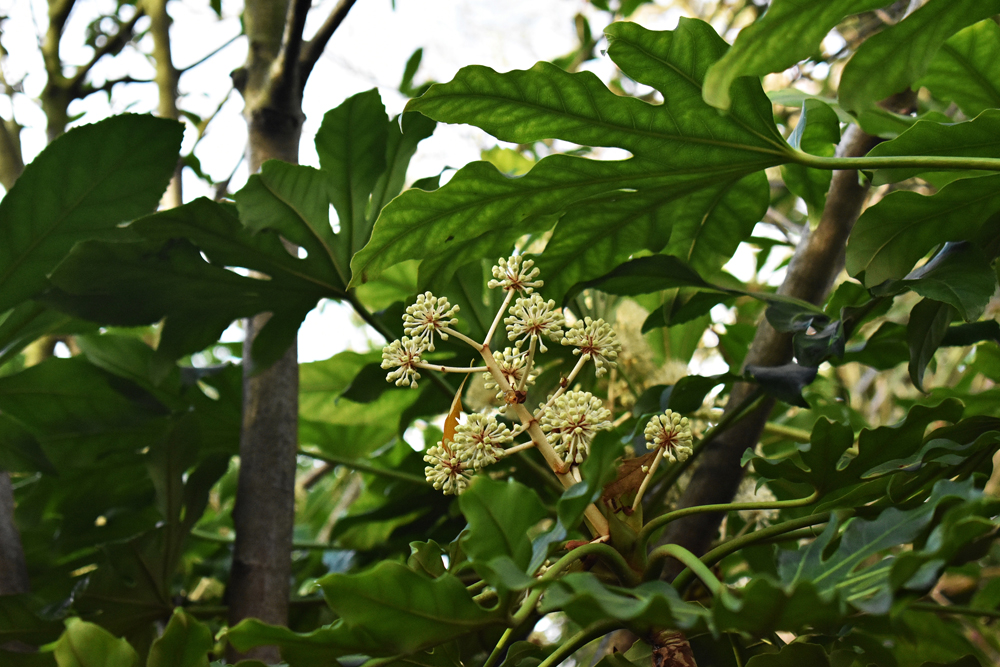
General Information:
Aralia are ornamental shrubs, although the hardy varieties have compound leaves up to three feet in length, making them unsuitable for bonsai. All can be successfully grown as indoor bonsai.
Lighting:
Prefers a bright location with indirect sun. Can do well with relatively low light levels.
Temperature:
Never below 60F for the Aralia species listed. 50F is the minimum for Polyscias, although it prefers a winter temperature of between 59-80F. One of the few plants that actually grows better indoors as it does not appreciate direct sun and is very intolerant of wind.
Watering:
Needs a lot of water, and constantly moist soil, but can develop root rot if water is allowed to stagnate around the roots. Misting is essential.
Feeding:
Every two weeks during growth, every six weeks in winter. Success using Osmocote has also been reported.
Pruning and wiring:
Usually shaped by pruning rather than wiring. Cut shoots back to one or two leaves when they have reached four or five. Removing inner branches results in a more tree-like appearance. Partial defoliation can be used effectively for leaf reduction. A slow grower, but will form more buds in very humid conditions such as a greenhouse or plastic bag. Remove suckers from single-trunk specimens to encourage fuller trunk growth.
Propagation:
The best method is to use root cuttings or air-layering. The plant suckers profusely, so division is another option. Softwood cuttings can be taken in spring, but require bottom heat of 75F, use of rooting hormone, and a high humidity to root. Seeds may be planted in autumn, but germination is uncertain.
Repotting:
Every 2-3 years in spring. Use a compact soil mix, but insure good drainage. Roots tend to be fragile and few, so caution in repotting is necessary. A deep pot is generally safer than a shallow bonsai pot. When Polyscias are to be root pruned, it helps to induce a short dormancy by keeping them at a temperature of 50F for about three weeks prior to repotting, then returning them to a temperature of at least 59F immediately afterwards to stimulate root growth.
Pests and diseases:
Eelworms, mites, scale, verticillium wilt, root rot, alternariose, bacterial canker.
Some species suitable for bonsai:
Aralia blacky - Desirable for bonsai because it forms a large trunk, this Aralia has smooth edged, scroll-shaped leaves.
Aralia castor (also called Dizygotheca castor) -dark green leaves marbled with white.
Aralia elegantissima (also called Dizygotheca elegantissima) similar to A. castor, but larger.
Polyscias fruticosa (also called Aralia ming) -white bark.
Bibliography:
Ainsworth’s “The Art of Indoor Bonsai”
Samson’s “Creative Art of Bonsai”
Species information from Thomas (ed.) “The Hearst Garden Guide to Trees and Shrubs.”
Compiled by Sabrina Caine
Eugenia sp. or Syzygium sp.
Common Name:
Brush cherries
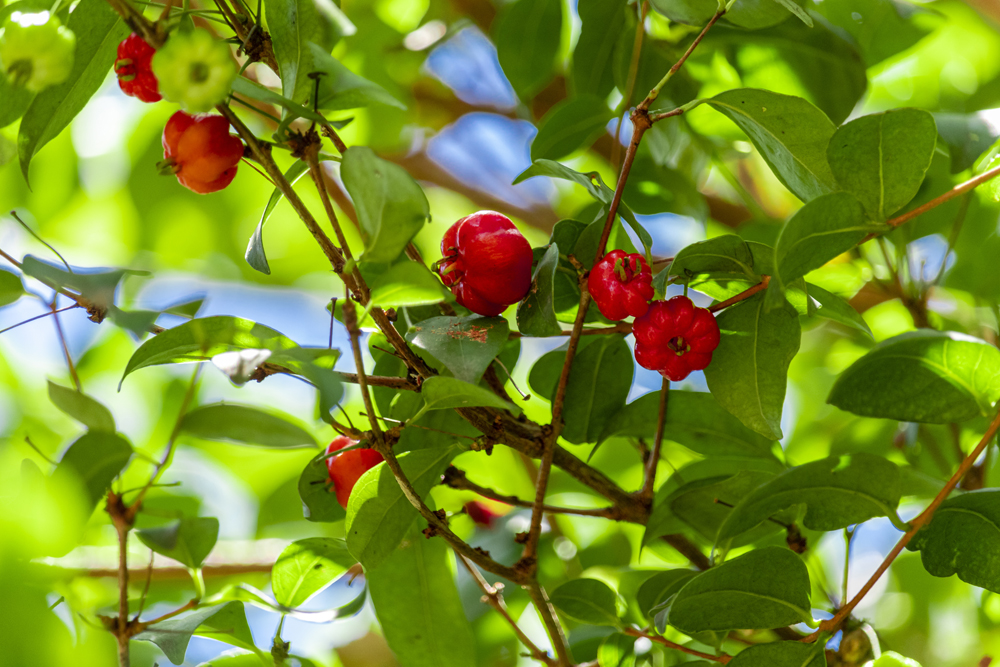
General information:
Eugenia is a large group of plants, some native and some non-native, including evergreen trees and shrubs, some of which have been reclassified to the genus Syzygium. The evergreen leaves are firm and glossy, and the flowers white. It is the dried buds of Eugenia aromatica (Syzygium aromaticum) which become the fragrant “herb” cloves. The flowers are followed by the production of berries, some types of which are edible. All these traits - the attractive foliage, flowers, and berries - help make Eugenia a popular landscape choice in warm climate areas, such as California, Florida, and Hawaii. Eugenia confusa (Ironwood, Red Stopper) is native to Florida and grows to about 35 feet and is well suited for street tree and parking lot planting. Eugenia foetida (Spanish Stopper) is also native and grows to about 15 feet tall.
A sub-tropical evergreen, with dark green ovate leaves formed in pairs. In spring, may bear small white flowers followed by red, edible fruit. With the exception of jaboticaba, Eugenia species have red, flaking bark. Surinam cherry is used extensively as a hedge plant in the Southern US.
Family:
Myrtaceae
Lighting:
Full sun to part shade. Appreciates a bright position, about 1500 Lux, but can tolerate low light. If placed outdoors in summer, can usually tolerate full sun, although partial shade is recommended in the hottest areas.
Temperature:
Never below 30F. Generally hardy in zones 10B and 11, otherwise can successfully be grown indoors. In summer, Eugenia likes the heat, while it prefers winter temperatures between 46-68F. Eugenia does not like drafts or a lot of variation in temperature.
Watering:
Generously in summer, less in winter. Surinam cherry does not like variations in watering, preferring a consistently slight moisture to being soaked and allowed to dry out. Lesniewicz recommends that Australian Brush cherry dry a little between waterings, but some posts testify that it will drop leaves if the soil dries. Eugenia needs humidity, so misting can be beneficial. Use distilled/rain water if your water is hard, as Eugenia does not tolerate salt.
Feeding:
Every 2 weeks during heavy growth, and every 4-5 in winter. Eugenia likes a slightly acid soil, so the occasional use of Miracid is recommended.
Pruning and wiring:
Can be pruned back hard, as it is a vigorous grower. Shorten new shoots with 6-8 pairs of leaves to 1-2 pairs. Can be wired while in active growth, but better shaping results are achieved with pruning. Protect the branches, as they scar easily. Leaf pruning can be done in summer on strong plants, but is not generally advised, as better leaf reduction results from timely pruning, and this plant has relatively small leaves in the first place. It is suitable for all styles, and for all but the largest sizes.
Propagation:
By cuttings in summer, seeds in fall, air-layering.
Repotting:
Every two years in early to mid-spring. Bottom heat helps to encourage root growth. Use basic bonsai soil, or an acid mix like azalea soil. Will withstand vigorous root pruning: jaboticaba can take up to 2/3 root loss, and while I would not recommend the following as a normal practice, up to 90% root removal has been performed successfully on Surinam cherry!
Pests and diseases:
Pests:
Scale, mealy bug, Caribbean fruit fly, aphids, red spider. Psyllids limit the tree’s usefulness in parts of California.
Diseases:
No diseases are of major concern. May drop leaves if watering is inconsistent. Not salt tolerant.
Some species suitable for bonsai:
Eugenia brasiliensis: Brazil cherry - likes slightly higher winter temperatures (64-68F) than other Eugenia species. Needs good light for its red, edible fruit to develop.
Eugenia cauliflora: Jaboticaba - Native from southern Brazil to southern California, southern Florida and Hawaii, the jaboticaba has creamy tan bark with pinkish and greyish highlights that peels in long strips like crepe myrtle. It will bear purple edible ovoid fruit when the plant is about 15 years old. Expect the jaboticaba to lose about half its leaves in early spring, before the new growth sets in.
Eugenia myrtifolia (also called Syzygium paniculatum): Australian brush cherry - Grows to 20 feet. Red, egg-shaped edible fruits. If it receives enough light, the leaves will develop red highlights. Prefers winter temperatures of 59-64F.
Eugenia myrtifolia var. Globulus (also called Syzygium paniculatum): ‘Teenie Genie’ cherry - a popular, widely available choice, much loved for bonsai due to its extremely small leaves.
Eugenia uniflora: Surinam cherry, Brazil cherry, pitanga - hardy to zone 10, this tropical “cherry” has round red and yellow fruits, which can be used in preserves and sherbets.
Bibliography:
USDA Fact Sheet ST-241
Compiled by Sabrina Caine Edited by Thomas L. Zane
Ficus neriifolia regularis (salicifolia)
Common Name:
Willow Leaf Fig
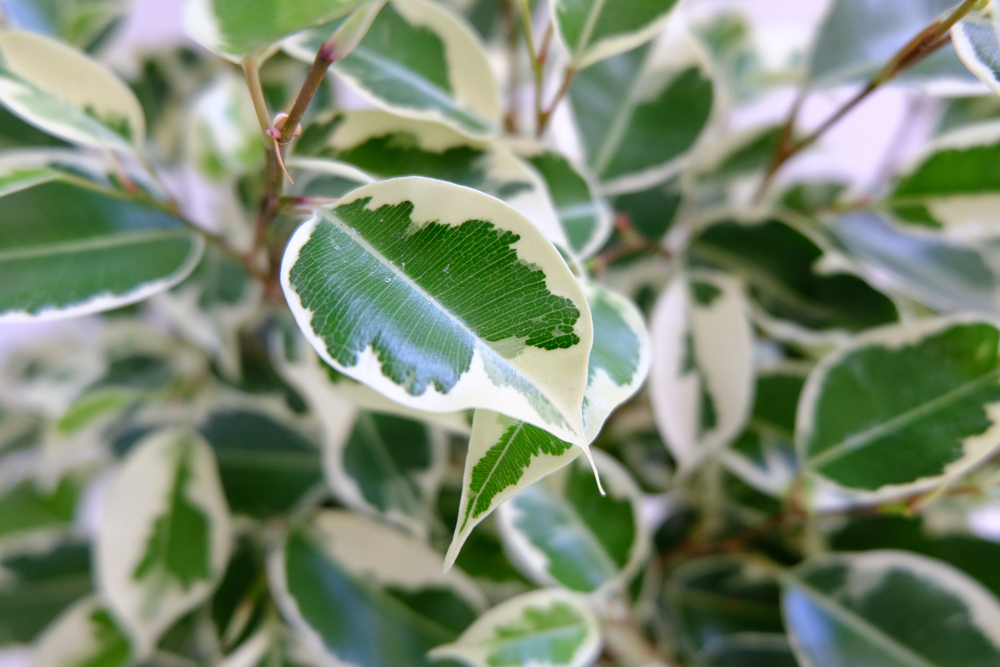
General Information:
Ficus salicifolia, also known as ficus neriifolia regularis, willow leaf fig, and narrow leaf fig, amongst others, is an evergreen tropical species of fig which originated in Indonesia. Its light to dark gray trunk thickens well and aerial roots develop from the trunk and branches in humid shady environments. The leaves are alternate, dark green, simple, lanceolate, one to three inches long and only a half inch to three quarters of an inch wide. New leaves are bronze to pinkish in color and usually curl to the right or to the left and straighten as they mature. Flowering and fruiting is insignificant.
Available from general purpose nurseries in South Florida and from bonsai nurseries throughout the country. It is easily propagated by cuttings of about any size taken in the summer. Specimens with large trunks can be potted into very shallow containers because all of the roots can be removed. Shortly after potting it will develop an entirely new set of roots.
Sudden changes in light or temperature may shock the ficus into shedding its leaves but new ones will develop shortly. During the interim, avoid over watering. Ficus salicifolia has been given many names over the years, however “Salicifolia” is he one which seems most universally accepted at present. But, by whatever name it is called, it is excellent material for nearly any style of bonsai.
Family:
Moraceae
Lighting:
The ficus will grow in deep shade to full sun. For best results in reducing the leaf and internode size, grow in full or nearly full sun.
Temperature:
The tree is not cold hardy and must be protected from frost and freezing weather.
Watering:
Water regularly and never let the soil dry out completely. Feeding: Feed frequently, but lightly, with a well balanced fertilizer year round.
Pruning and wiring:
Pruning and wiring can be done anytime and pinching must be constant throughout the year to maintain its shape. It tends to exhibit lateral branch dominance which means the side branches have to be kept in check to avoid weakening the central leader.
Propagation:
Cuttings.
Repotting:
Ficus salicifolia is best repotted in the warm weather. Its roots grow so rapidly that it may need repotting twice a year. It will grow in almost any soil, but prefers a porous, well drained, and slightly acid mixture.
Pests and diseases:
It is subject to spider mites, mealy bugs and various scale insects.
Some species suitable for bonsai:
Ficus altissima: lofty fig
Ficus aurea: Florida fig
Ficus benjamina: weeping fig, Benjamin tree
Ficus buxifolia
Ficus carica: common fig, fig tree
Ficus erecta: inu-biwa
Ficus macrophylla: Moreton Bay fig, Australian banyan
Ficus microcarpa: banyan
Ficus natalensis: Natal fig tree
Ficus neriifolia: fig, willow-leaf ficus
Ficus neriifolia regularis (also known as F. salicifolia): willow-leaf fig Ficus platypoda: Australian fig
Ficus pumila: creeping fig
Ficus religiosa: bo tree , peepful fig
Ficus retusa: fig, banyan fig, Indian laurel
Ficus retusa formosanum
Ficus rubiginosa: Port Jackson fig, rusty leaved fig
Ficus salicifolia (also known as F. neriifolia regularis): willow-leaf fig Ficus virens: spotted fig
Bibliography:
“Educational Forum”, by Marian Borchers and Lynn Liggett, Florida Bonsai, VII, 3:35-37.
“Ficus Neriifolia - also called Salicifolia”, by Mayna Hutchinson, Florida Bonsai, XIII, 4:3-9.
“Lucky 13th Convention Letter”, by Jim Smith, Florida Bonsai, XIV, 4:3-4. Also: FB X:2:24,XIII:3:4,XIV:3:21-3,XV:3:11-14,XVI:3:31- 34,XVII:4:9,XVIII:1:26,XX:4:12
Compiled by Thomas L. Zane
Ficus sp.
Common Name:
Fig
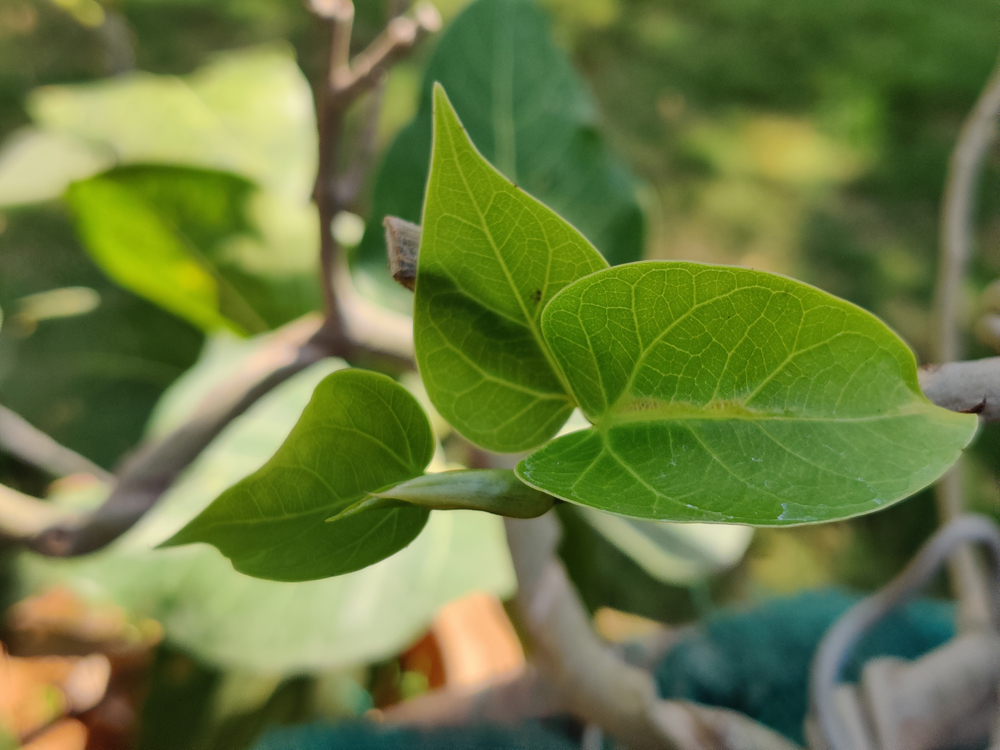
General information:
This is a huge tree growing to 60 feet tall and 60 to 70 feet wide. The dense, rounded canopy and gracefully drooping branches of Weeping Fig made it quite popular as a landscape tree until recently. The thick, shiny, two to five-inch-long, evergreen leaves generously clothe the long branches, and the tiny figs eventually turn a deep red. Branches will weep toward the ground forming a canopy so dense that nothing grows beneath it.
There are over 600 species of Ficus, most of them tropical and evergreen, although some, most notably F. carica, the common fig, are deciduous. Ficus produces a unique “fruit” which is actually an inverted flower. Not all Ficus produce edible fruit.
Ficus is one of the most loved bonsai for many reasons. It is an excellent tree for beginners, as most species of Ficus are fast growers, tolerant of most any soil and light conditions, make fine indoor bonsai, and perhaps most importantly, are remarkably forgiving of those just learning bonsai watering techniques. Most Ficus grow “banyan” roots naturally; this feature is often showcased by styling Ficus in dramatic air-root and root-over-rock styles.
At the end of this presentation are various Addendum for specific varieties of Ficus.
Family:
Moraceae
Lighting:
Most Ficus will grow decently in low light, but thrive in high light conditions.
Temperature:
Hardy in zones 10B through 11. With the exception of F. carica, most Ficus are tropical, and require temperatures above 55F. An excellent choice for an indoor bonsai. Indoor Ficus appreciate being brought outdoors during summer. Does not like drafts.
Watering:
Moderate, increasing in summer and decreasing in winter. Many Ficus are very tolerant of being over or under watered, which makes them ideal for beginners. Ficus likes a daily misting to maintain humidity.
Feeding:
Every two weeks during growth, every 4-6 in winter, using a half- strength plant food or a bonsai fertilizer.
Pruning and wiring:
Ficus are suitable for most styles of bonsai, but are especially suitable for styles which make use of their property of extensive rooting, such as air-root and root-over-rock styles. Ficus can be used for all sizes of bonsai, although, obviously, the small-leaved species make the best miniature bonsai. Leaf pruning can be used to reduce leaf size. Ficus can be wired, but become quite stiff when lignified, and thus are best wired while the shoots are a bit green. Watch carefully to see that the wire doesn’t bite in, as Ficus is a very fast grower. Prune back to 2-4 leaves after 6-10 leaves have grown. Ficus will bleed a milky latex profusely. Many books recommend use of cut paste or other sealant for this reason. I’ve tried it, and found it to be more trouble than it’s worth, since the oozing latex makes it difficult for the cut paste to adhere. In any case, when the latex dries, it forms its own natural seal. Gustafson recommends using a dull pruning tool on Ficus, as a clean cut made by a sharp tool tends to bleed more than a ragged- edged cut.
Propagation:
One of the easiest plant to root from cuttings; although the specifics for maximum success vary with species, it’s always worth sticking them into soil for the heck of it, unless you’re already overrun with baby Ficus! My success rate, doing nothing special except an initial dose of Superthirve, is at least 80%. Very large diameter cuttings of Ficus can be successfully rooted. Air-layering is also quite easy. Ficus can be grown from seed, but require heat and humidity, and easily succumb to mould. I recommend growing from seed only if you desire a rare Ficus that can’t be purchased easily.
Repotting:
Every 2-3 years, although some will grow rapidly enough that yearly repotting may be necessary. Ficus is the single most forgiving bonsai in terms of repotting season. The best time is before a new growth spurt, especially in spring, but Ficus can literally be repotted any time of year if reasonable after-care is given. Roots can easily be pruned by half. Basic bonsai soil is recommended, although Ficus tolerates many soil conditions.
Pests and diseases:
Pests: Scale, eelworm, black fly, thrips. Diseases: Anthracnose fungus and various forms of rot. Some ficus will lose leaves if over-watered or given too little light (see addenda for individual Ficus care).
Some species suitable for bonsai:
Ficus altissima: lofty fig
Ficus aurea: Florida fig
Ficus benjamina: weeping fig, Benjamin tree - One of the best trees for beginners - inexpensive, readily available, able to be transplanted any time of year, grows in low light, tolerant of erratic watering, develops spectacular banyan roots - what’s not to love? Its large leaves, for one, but it can be leaf pruned, and dwarf cultivars, such as ‘Too Little’ can be had, albeit not as easily or cheaply. It has smooth grey bark, slightly drooping branches and bright green ovate leaves.
Ficus benjamina exotica
Ficus benjamina ‘Lucy’
Ficus benjamina ‘Natasha’
Ficus benjamina ‘Too Little’
Ficus buxifolia - Small, triangular leaves and very good branch ramification for Ficus. Its small green fruit rarely ripens in temperate climates.
Ficus carica: common fig, fig tree - produces edible figs, but has very large leaves, making it suitable for only the largest sized bonsai. A Mediterranean tree, it is one of the few deciduous Ficus species. Ficus deltoidea (also called F. diversifolia): mistletoe fig - small, leathery leaves, green or yellow fruit. A lovely houseplant, but reputedly tough to train for bonsai due to lack of trunk thickening and back budding.
Ficus erecta: inu-biwa - Its most noticeable feature is that it will produce figs. Roots easily from cuttings.
Ficus ilicina: laurel fig - An extremely fast grower, even for Ficus! Large leaves (which will reduce somewhat) make it best for large sizes.
Ficus macrophylla: Moreton Bay fig, Australian banyan - glossy, leathery, dark-green leaves.
Ficus microcarpa: banyan, Green Island fig - thick, round, half-dollar sized leaves, which can be reduced.
Ficus natalensis: Natal fig tree - long, leathery, spatula shaped leaves. Will grow air-roots.
Ficus neriifolia: fig, willow-leaf ficus
Ficus neriifolia regularis (also known as F. salicifolia): willow-leaf fig Ficus panda - requires little light, only about 800 Lux.
Ficus platypoda: Australian fig - grows multiple trunks in nature. Will produce small orange-red flowers.
Ficus phillipinensis - similar to benjamina, but has smaller leaves and bears pink fruit.
Ficus pumila: creeping fig - oval to heart shaped leaves. A climbing plant, easily trained into root-over-rock style.
Ficus religiosa: Bo tree , peepful fig - a sacred tree in Eastern traditions, the Bo tree has lovely heart-shaped leaves which are pink when young.
Ficus retusa: fig, banyan fig, Indian laurel - small, glossy, leathery leaves. Grows especially spectacular banyan roots.
Ficus retusa formosanum - daintier than F. retusa, with rounder and thicker leaves.
Ficus rubiginosa: Port Jackson fig, rusty leaved fig - gets its name from the rust-covered down which often coats the undersides of leaves. Needs only about 1000 Lux.
Ficus sagitata variegata: trailing fig - a graceful plant with lovely cream and green leaves, but does not form a thick trunk easily. Will naturally cascade or climb rocks.
Ficus salicifolia (also known as F. neriifolia regularis): willow-leaf fig
Ficus virens: spotted fig.
Addendum for Ficus benjamina: weeping fig, Benjamin tree and its cultivars and varieties
A very easy plant to cultivate. Needs only 1000 Lux, although it adapts to both higher and lower light levels. Loves “warm feet” and thus can even be kept on a shelf above a radiator, although this is not necessary. May lose leaves if there is too much water or not enough light, but it tends to be very tolerant of adverse conditions. Can be leaf pruned during the main growing season to reduce leaf size. Wiring is possible at any time, but check frequently to make sure the wire isn’t biting in. Will develop air-roots readily; I have found that a monthly dose of Superthrive can be given safely and will result in the profuse growth of air-roots. Cuttings are best taken in summer, but will actually root most any time.
Addendum for Ficus buxifolia. Can be kept indoors year round, although it prefers to be taken outside in summer. Likes a winter temperature of 64-75F. Needs much light (2000 Lux is ideal, although it will do with less). Will lose leaves if over-watered. It is usually best to prune after a new branch has developed 10-12 leaves. For main branches the technique is different: F. buxifolia develops very thin branches and it may be necessary to allow 30-40 leaves to grow before a main branch is pruned to its proper length to encourage thickening. Cuttings are best taken in summer.
Addendum for Ficus carica. Needs about 1500 Lux. Can be grown successfully indoors, but requires temperatures of 41-46F in winter to induce dormancy. Allowing the leaves to droop slightly before watering aids in leaf reduction. May go 2-4 years between transplantings. Forms very thick branches which are best wired when young. The best time for wiring is in early spring, before new growth begins. Leaf pruning to reduce leaf size is recommended. The plant will also dwarf leaves naturally after some years in a container. Take cuttings in spring, before they become lignified.
Addendum for Ficus ilicina: laurel fig. Can be treated much the same as F. benjamina. A monthly dose of Superthrive can be safely given, and will encourage the formation of banyan roots.
Addeunum for Ficus microcarpa: banyan, Green Island fig. A very robust tree that does well both indoors and out. Can tolerate low light, but grows more strongly with high light. Grows extensive banyan roots, and will probably need to be transplanted every two years. Leaf pruning is used to reduce leaf size; a total defoliation can be performed at the end of spring on healthy specimens. Wait until the branches have lignified slightly to wire. Summer is the best time to take cuttings.
Addendum for Ficus natalensis: Natal fig tree
A very low maintenance tree: tolerates low light (1000 Lux), dry soil, and even being placed in a hot, dry spot, for example, near a radiator. Temperature should be between 59-75F, and near the cooler end in winter. Can take vigorous root pruning, and will probably require transplanting after 2 years. Cut back shoots after 12 leaves have developed. Can be wired from mid-late summer, but wait until branches are lignified. Cuttings are best taken in summer, and root more successfully when bottom heat is applied.
Addendum for Ficus neriifolia (salicifolia): Click on: Narrow leaf fig
Addendum for Ficus religiosa: Bo tree , peepful fig and Ficus virens: spotted fig
Needs much more light (2000 Lux) than the average Ficus. Prefers to be outside when temperatures are above 60F, but needs protection from wind. The tree will lose leaves if it is too cold or has too little light. Wiring is best done from autumn to spring on lignified branches. Will form a thick, spreading nebari - spreading the roots radially when transplanting will encourage this. Leaf pruning may be used to encourage reduction in size. A vigorously growing plant can be defoliated twice a year. Cuttings are best taken in early spring, with bottom heat between 71-79F.
Addendum for Ficus retusa: fig, banyan fig, Indian laurel
Much more sensitive during repotting than the average Ficus. Root pruning should be gradual in temperate climates. Do not attempt to wire or prune extensively for three months after transplanting. Sudden changes of temperature may cause all the leaves to drop.
Addendum for Ficus sagitata variegata: trailing fig
Does not have the thick, rubbery leaves of most Ficus species, which make it more sensitive to under-watering. Do not give this plant Superthrive, as it results in odd distortions of leaf shape. Wiring may cause enough stress to result in leaf loss, so attempt shaping gradually.
Bibliography:
UADA Fact Sheet ST-251
Compiled by Sabrina Caine Edited by Thomas L. Zane
Gardenia sp.
Common Name:
Gardenia

General information:
Shrub with fragrant white flowers, glossy, dark green leaves.
Family:
Rubiaceae
Lighting:
Partial shade to full sun.
Temperature:
Zone 7 to 9.
Watering:
Do not allow to dry out and remain dry. Prefers moist soil.
Feeding:
Every 2-3 weeks, spring-autumn. Use a fertilizer such as Miracid, formulated for acid-loving plants, at half- strength. Do not fertilize while the plant is in bloom. The plant may also benefit from administering chelated iron 2-3 times a year.
Pruning and wiring:
Wire from late spring to autumn, taking care to protect the delicate bark and branches. Do not wire while the plant is setting buds, and wire only lignified shoots. Young plants should be pruned after the shoots have developed 4-6 leaves, trimming back to 2-3 to establish branching. Pruning of established bonsai is best done following flowering, pruning only once and then allowing new shoots to set buds.
Propagation:
Tip or midsection cuttings with wood 6 - 8 weeks old, 4 - 5 inches long with 2 or 3 sets of leaves. Cuttings may be taken any time of the year, but summer is best. May be propagated by grafting and some cultivars by seeds.
Repotting:
Every 1-2 years in late winter or spring, following blooming. Well drained soil high in organic matter. Soil pH between 5.0 and 6.5.The roots are superficial and fine, so drastic root pruning is not recommended, and it is best if only 10% of the roots are removed.
Pests and diseases:
Stem canker distinguished by rough cracked areas that form cankerous growths near the soil line - destroy the plant. Sooty mould, aphids, scales, mealybugs and whiteflies, cotony cushion, spider mites, nematodes.
Some species suitable for bonsai:
Gardenia radicans, a dwarf variety. Small leaved, almost creeping version of the species. 1 inch diameter flowers.
Gardenia radicans, variegated dwarf variety.
Gardenia thunbergia
Gardenia jasminoides Gardenia ‘Aimee yashioka’
Bibliography:
University of Florida, Florida Cooperative Extension Service, Circular 1098.
Compiled by Thomas L. Zane
Hedera sp.
Common Name:
English Ivy
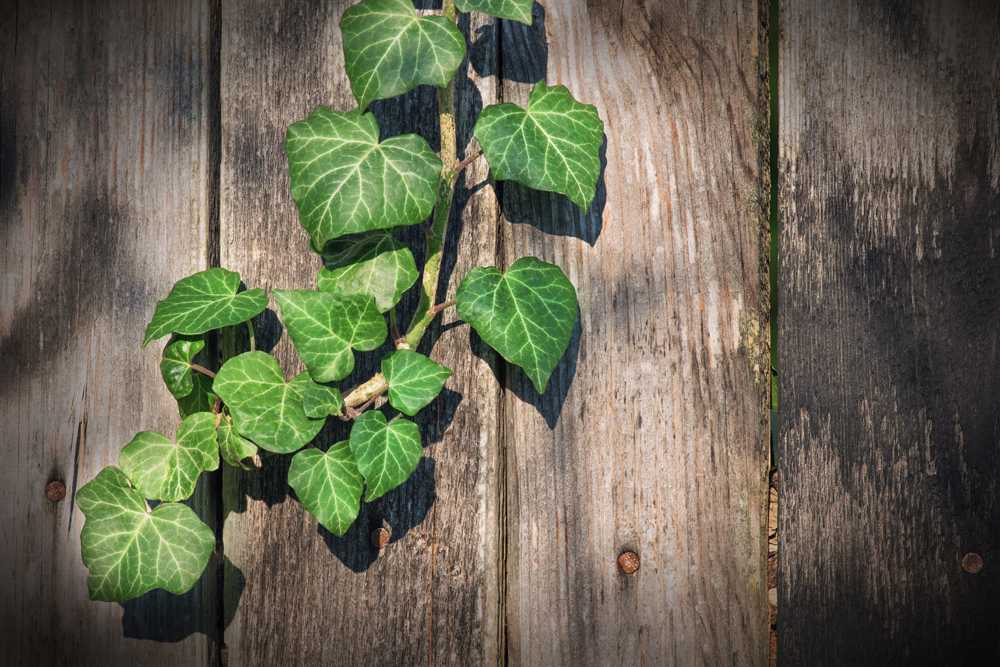
General Information:
Ivy is a prominent plant in legend and lore. It is associated with the god Bacchus (and hence with tavern signs), and a cup made of ivy-wood was thought to cure whooping-cough. Ivy is gaining popularity as a bonsai, for although a vine, ivy will develop an attractive woody trunk for use in pot culture.
Lighting:
Most ivy prefers semi-shade, although Hedera helix thrives on full sun when it is kept in temperate climates, but can also grow in shade. In low humidity areas, H. helix should be kept in the morning sun only. H. canariensis seems better able to stand the combination of high temperature and low humidity.
Temperature:
Lesniewicz claims that H. helix can be grown successfully indoors. It is zone hardy in colder climates, while H. rhombea is more tender.
Watering:
Frequently during growth, moderating in winter. Careful reduction of watering is a very effective technique to reduce leaves in H. helix.
Feeding:
Every two weeks during growth, using liquid bonsai food or half- strength plant food. Heavy use of fertilizer cakes will help young whips to develop trunk girth rapidly.
Pruning and wiring:
Any style but formal upright. Cut new shoots back hard to the first one or two leaves near the trunk. As with most woody vines, the major challenge is to grow a thick trunk, and to keep growth compact. A good start is by using an old vine that has been collected.
Propagation:
Cuttings, air-layering. A good source is old, unwanted vines alongside houses, which have had time to grow thick, woody trunks. Young plants creep, but older plants become shrubby - and cuttings taken from shrubby plants retain these characteristics suitable for bonsai.
Repotting:
Every two years in spring or early autumn, using basic bonsai soil.
Pests and diseases:
Scale, leaf spot. Some species suitable for bonsai:
Hedera canariensis: Algerian Ivy - burgundy-red twigs and petioles, with long, glossy, leathery leaves.
Hedera helix: English ivy - Resnick claims that it is hardy to zones 3-4, depending on variety, but Coates states that H. helix does not thrive in areas with harsh winters. It has glossy dark leaves with 3-5 lobes, yellowish flowers, and black berries.
Hedera helix ‘Gnome’ - Very small black green leaves which turn purplish in winter.
Hedera helix ‘Hahnii’ - A bushy form, with branching at the tips.
Hedera helix ‘Telecurl’ - Forms a twisted woody trunk, which makes it excellent for bonsai. A semi-dwarf form which also has twisted leaves and stems.
Hedera rhombea: Japanese ivy - hardy to zone 8.
Bibliography:
Florida Bonsai XVI:3:48
Watkins: Florida Landscape Plants, p.305.
Lesniewicz’s “Bonsai in Your Home”
Murata’s “Four Seasons of Bonsai”
Resnick’s “Bonsai”
Tomlinson’s “Complete Book of Bonsai”
Species information from Coats’ “Garden Shrubs and Their Histories.”
Compiled by Sabrina Caine and Thomas Zane
Ilex sp.
Common Name:
Holly
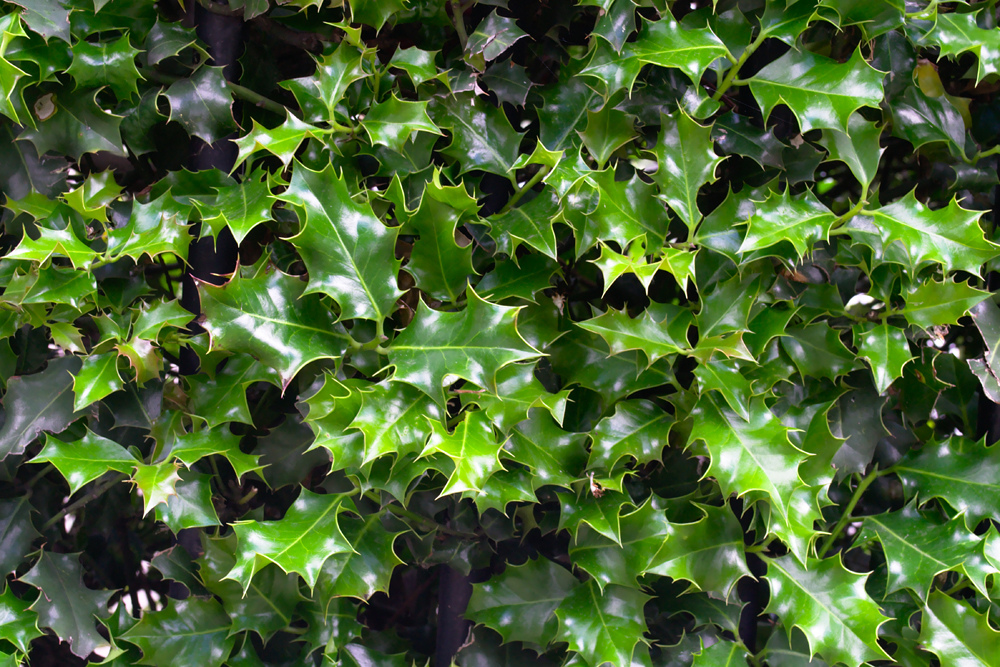
General Information:
Available in both evergreen and deciduous species, holly is grown for its toothed glossy green leaves and its showy berries, which are red in most popular varieties, but can also be a showy yellow. Holly can range from under one foot to over 80, and is found in both temperate and tropical regions. Both male and female plants are needed for fruiting.
Family:
Aquifoliaceae
Lighting:
Can tolerate both sun and shade, although semi-shade is preferable in midsummer. Increased light tends to produce dense foliage.
Temperature:
In general, evergreen varieties are hardy to zone 7, deciduous varieties to zone 5. Most varieties will require some frost protection, and all varieties should be sheltered from strong or cold winds.
Watering:
Needs a fair amount of water, especially before fruit production. Holly can be badly damaged by drafts. Reduce watering in winter. Likes misting, unless it is in full sun.
Feeding:
Every two weeks during growth, using half strength liquid plant food, or bonsai food.
Pruning and wiring:
Cut back new shoots to the one or two nodes closest to the trunk. Branches can be very brittle, so shaping is best done by pruning rather than wiring. If wiring must be done, it is best to wire in spring- summer, taking care to protect the bark. Leaf pruning to reduce leaf size is possible. Suitable for all sizes and styles, although the evergreen varieties do not take as well to broom style. Ilex asprella has a tendency towards horizontal growth which must be compensated for; Ilex vomitoria, on the other hand, has a strong inclination to grow upwards.
Propagation:
Seed, cuttings, and air-layering are all possible for deciduous varieties. Evergreen varieties are best propagated through cuttings. Germination from seed requires cold pre-treatment, and seed can take up to three years before sprouting. Cuttings taken from wood grown in the current year root more easily. Ilex vomitoria nana may be found growing in the wild and may be collected in early Spring.
Repotting:
Every 1-2 years in early spring. Use basic bonsai soil.
Pests and diseases:
Pests:
Caterpillars, leaf-miners, leaf spot, scale, mites and spittlebugs. The plant can also be weakened by too much fruit production, so it is wise to limit the amount of fruit on the tree.
Diseases:
Twig gall sometimes forms in response to a fungus infection.
Some species suitable for bonsai:
Ilex aquifolium: common holly, English holly, European holly -Commonly marketed for Christmas decorations, this holly is evergreen, and well-loved for its bright red fruits and glossy, spiny leaves. It can grow to 50 ft. in the wild. Hardy in zones 7-9.
Ilex asprella - a deciduous holly native to Taiwan. It has black bark with tiny white spots, and black, egg-shaped fruit. The ideal temperature range is between 59-64F.
Ilex attenuata: Foster’s holly.
Ilex cornuta ‘Rotunda’: dwarf Chinese holly - a Chinese native, now popular as a hedge plant in the U.S., this Ilex grows to 2 ft. It bears red fruit, and has dark, somewhat rectangular leaves with three spines at the tip. Female plants can bear fruit without males. Hardy in Zone 7.
Ilex cassine: Dahoon holly - A low, shrubby tree with rough grey bark and silky shoots, the Dahoon holly is native to swampy land in the American south.
Ilex crenata: Japanese holly, box-leafed holly - an evergreen shrub that gets its name from its leaves, which cause it to be sometimes mistaken for box. The species can reach 15 ft., and thrives in zones 6- 9, although cvs. may differ.
Ilex crenata ‘Convexa’: Japanese holly - has noticeably convex, dark green leaves.
Ilex crenata ‘Mariesii’: Japanese holly, dwarf Japanese holly, dwarf box-leaved holly.
Ilex crenata ‘Stokes’: Japanese holly - a dwarf form.
Ilex decidua: possumhaw - native to the Southeastern U.S., this plant, with its 1-3 inch lustrous green leaves and bright orange-red fruit, may grow from 10-20 ft. It is hardy in zones 5-9.
Ilex dimorphophylla: Korean holly, Okinawan holly.
Ilex glabra: inkberry, winterberry - This evergreen has tiny black berries and 1-2 inch leaves that are wide at the tip and nearly spineless. It grows to 8 ft. in a dense, upright habit. It grows in zones 5- 9 and is very tolerant of a wide range of light and moisture conditions.
Ilex x meserveae: blue holly, Meserve holly - An evergreen with shiny dark bluish-green leaves on purple stems. The leaves are edged with coarse tears, and the female plant bears brilliant red berries.
Ilex opaca: American holly - Grows to 50 ft. with 3 inch, dull green leaves. The fruits may be red, oragne or yellow. Hardy in zones 6-9. Ilex pernyi: Perny holly - A red-fruited evergreen, with yellow flowers. Hardy to zone 6.
Ilex serrata: Japanese winterberry, ume-modoki - Hardy to zone 5, this deciduous holly has red fruit and lavender to white flowers.
Ilex serrata ‘Leucocarpa: white-beried Japanese deciduous holly.
Ilex serrara ‘Ohwi’ (Koshobai).
Ilex serrata sieboldii: deciduous holly - produces a large quantity of red to coral colored fruit.
Ilex serrata ‘Sparkleberry’.
Ilex serrata ‘Subtilis’ (‘Koshobai’): Japanese deciduous holly - a very small form, suitable for only the smallest sizes.
Ilex serrata: finetooth holly.
Ilex verticillata: black alder, winterberry - This 8 ft. shrub has red- orange berries that last well into winter. The dull green, spineless leaves turn yellowish in fall.
Ilex verticillata ‘Red Sprite.
Ilex vomitoria: Yaupon holly - This upright, spreading small evergreen tree or large shrub, capable of reaching 15 to 25 feet in height with a similar spread, has small, grey-green, oval shaped leathery leaves densely arranged along smooth, stiff, light grey branches. Plants in the landscape require about 10-years to develop a distinct vase-shape. Sometimes clipped into a tight hedge, Yaupon Holly is ideal for training into a small tree with lower branches removed to reveal the interestingly-contorted multiple trunks. It can also be used for topiaries, espaliers, specimens, screens, or barriers. The non-showy male and female flowers appear on separate plants and are followed on the female plants by the production of brilliant red berries (yellow on some cultivars) which are quite attractive to wildlife. The flowers attract bees for several weeks. Purchase plants with berries on them (females) if you want a berry-producing plant, or buy trees which were propagated from cuttings of female plants. Tolerates a wide range of light and moisture conditions. Native Americans drank a tea made from the dried leaves of this plant; however, if tea is made from fresh leaves it induces severe gastric distress, hence the botanical name!
Ilex vomitoria nana: dwarf Yaupon holly.
Bibliography:
Lesniewicz’s “Bonsai in Your Home”
Murata’s “Four Seasons of Bonsai”
Resnick’s “Bonsai”
Samson’s “Creative Art of Bonsai”
Tomlinson’s “Complete Book of Bonsai”
Species information from Mitchell’s “American Nature Guides: Trees,” and Thomas (ed.) “The Hearst Garden Guide to Trees and Shrubs.”
USDA Fact Sheet ST-311
University of Florida, Florida Cooperative Extension Service, Fact Sheet OH- 42
Compiled by Sabrina Caine Edited by Thomas L. Zane
Ilex vomitoria nana
Common Name:
Dwarf Yaupon Holly
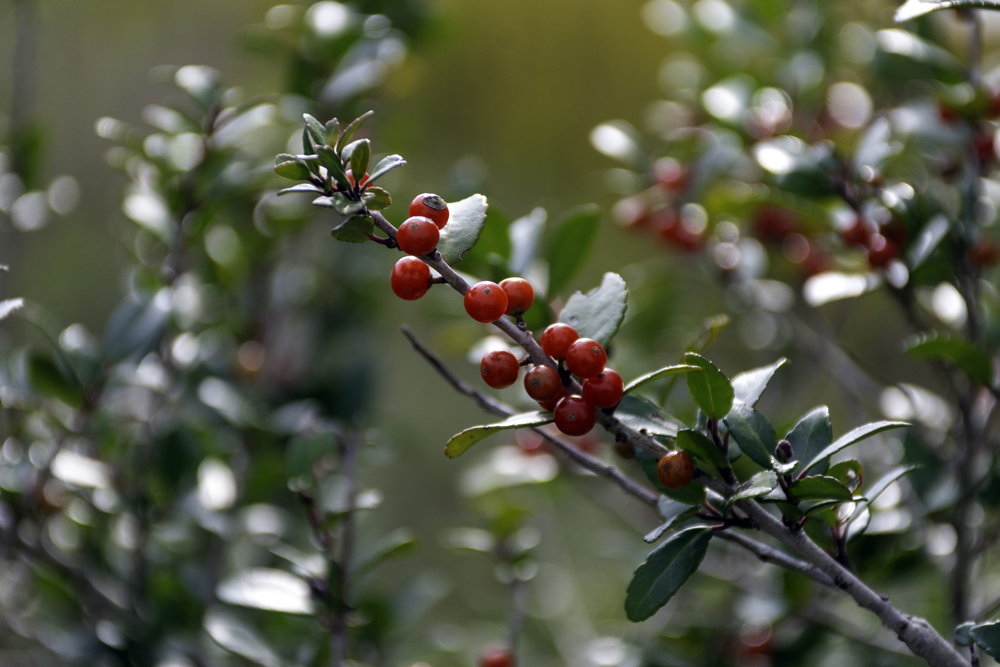
General information:
Botanical name for this particular specie of holly is Ilex vomitoria nana or Dwarf Yaupon Holly. It is one of eleven hollies native to Florida. It usually grows as a shrub but occasionally may be found as a tree. Its foliage consists of dark green evergreen oval to egg-shaped leaves. Female varieties of this holly bear fruit in the fall which is red and are only about 1/4” in diameter.
Ilex vomitoria nana is available from nurseries and garden centres. It is often confused with a couple of close relatives. One is Ilex Shillings which does not grow native but has adapted well to the SE USA. The other is Ilex myrtifolia or myrtle-leaved holly. Ilex vomitoria nana may also be found growing in the wild and may be collected in early Spring. They may be grown from seed or from soft wood cuttings.
The portion of the name of the plant, “Vomitoria”, is a rather unsavory name given to a very nice and useful plant. The early settlers in the SE USA learned from the Indians that the leaves of this plant could be used to make tea. The Indians used the leaves to prepare their ceremonial black drink by drying the leaves until they are black and crumbly, then steeping in hot water. However, if the leaves are used without going through the drying process they produced a memorable reaction on the human digestive system. Hence the addition of “vomitoria” to its name. “Nana” is a common horticultural suffix meaning, “dwarf”.
Lighting:
It will grow in full shade to full sun, but the more light it has the more dense its foliage will be.
Temperature:
Will tolerate short term freezing.
Watering:
It does not like to remain dry for a very long period of time.
Feeding:
It should be given half strength liquid fertilizer every two or three weeks. It prefers an evenly balanced (20 20-20) fertilizer but is not too choosy.
Pruning and wiring:
Its new growth shows a strong tendency to upwards growth and must either be wired horizontal or pruned to retain shape. When pruned it will burst forth profusely with new thick growth throughout the growing season.
Propagation:
Cuttings.
Repotting:
It is not particular about the type of soil it has.
Pests and diseases:
The only pest which seems to attack the Ilex vomitoria nana is the leaf miner. It is a very small creature which literally mines the interior of leaves, leaving a black trail where it has eaten the nutrients. Infestations can be prevented with a preventive spray of a systemic insecticide. (A systemic insecticide is one which enters the system of the plant and remains active there for an extended period of time, killing any sucking type of insect.) If a leaf becomes infected with a leaf miner, it will never repair itself and should be removed.
Bibliography:
“Yaupon (Ilex vomitoria)” by John Woodham, Florida Bonsai, XIV, 2:14-15. “Aquifoliaceae” by Jeff Ketts, Florida Bonsai, XXI, 4:11-12.
Florida Bonsai XVIII:1:27
Watkins, “Florida Landscape Plants” p.243
Compiled by Thomas L. Zane
Ixora javanica
Common Name:
Jungle flame/Jungle Geranium
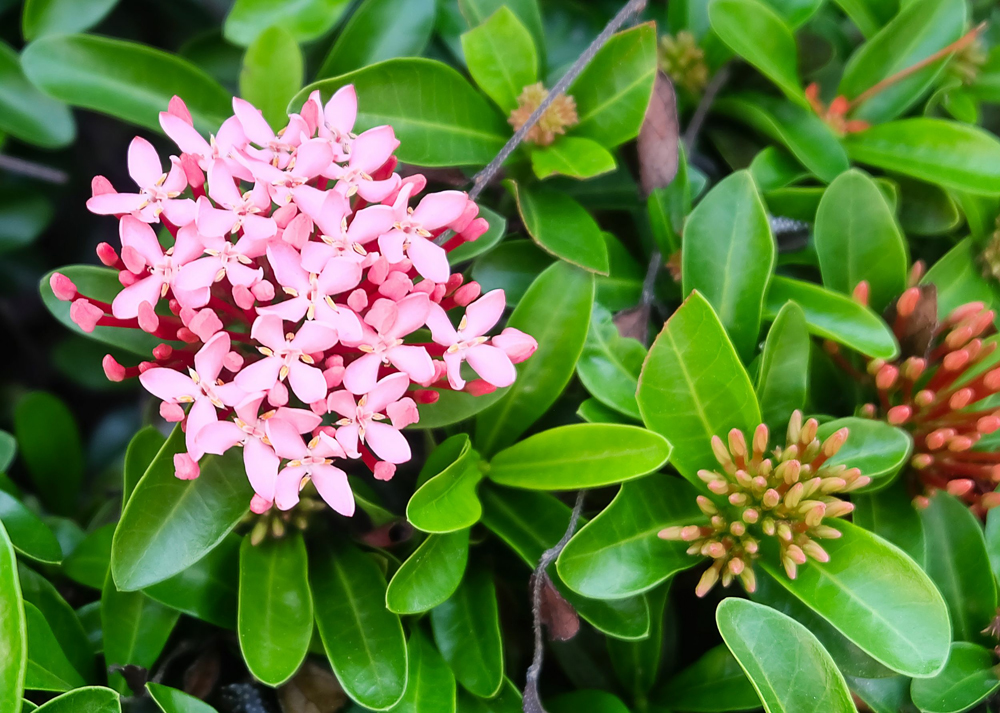
General information:
It has a lost of common names like ponna, kheme, chann tanea, pan, todong periuk, pechah periuk, jarum-jarum, ki soka, areng-arengan, Te prey, Jungle flame, and Jungle Geranium... Wow. Anyway Ixora is an evergreen, scarlet- red flowering bush, and is an indoor bonsai. Blooming season is May to September.
Kingdom
Plantae – Plants
Subkingdom
Tracheobionta – Vascular plants Superdivision Spermatophyta – Seed plants Division Magnoliophyta – Flowering plants Class Magnoliopsida – Dicotyledons
Subclass
Asteridae
Order
Rubiales
Family
Rubiaceae – Madder family
Genus
Ixora L. – Ixora
Origin
India
Lighting/Location:
Requires bright light and prefers humid conditions. May be kept outdoors until night time temperatures drop below 45 degrees. A humid flower window it best. All year round bright to semi shady, warm and humid. Ground warmth helps this plant
Temperature:
Indoors at 18 – 22’ C (64 – 72’ F)
Watering:
Allow soil surface to become slightly dry between watering. If kept indoors this will probably be daily. Plant doesn’t tolerate hard, cold water. In summer keep evenly damp, in winter water more sparingly.
Fertilizing:
Ixora are acid lovers. Feed monthly with a good quality water soluble fertilizer formulated for acid loving plants. March to august feed with a low dosage every 2 weeks.
Pruning:
Remove blooms when past peak. Removing one or two leaves below the blossom will promote branching and increase blooming. Remove undesired branches at any time plant appears healthy.
Wiring:
Not recommended due to their brittle nature.
Repotting:
As necessary, repot in spring with a mix of all purpose potting soil.
Propagation:
In spring, tip cuttings at ground temperature of at least 77’F (25’C) and high humidity.
Pests and diseases:
Curled leaves in a too sunny location. Blanched leaves (chlorosis) from water that is too hard or too cold and cold feet (roots). Flower or leaf drop from abrupt changes in temperature or location. Scale insects from dry air.
Compiled by Jeff McKnight
Lantana camara
Common Name:
Lantana
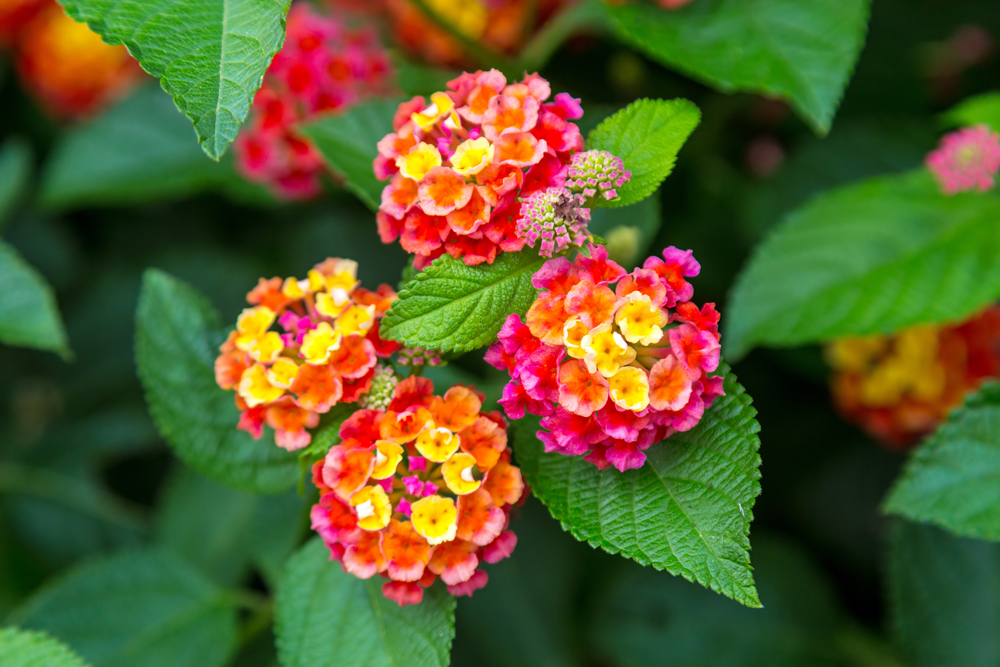
General Information:
Lantana is an evergreen shrub with rough textured bark, rough, pointed, toothed and scented leaves which grows wild throughout Florida. It has small pink and yellow cluster flowers in the summer. Native to SE USA. Grows as wild, erect shrub in a rambling, spreading habit. Well developed trunked specimens may be collected. It is native to Tropical America. Its leaves are simple, opposite, oblong-obate, to 5 inches long, puckered, interveninal regions, rough, rugose surface, aromatic when crushed, margins bluntly toothed. Stems are hairy and prickly.
Available commercially in nurseries but found extensively in the wild. Because lantana grows as a weed in Florida collected specimens are a prime source for bonsai. They can be collected in the spring or right on through summer. Such specimens usually have poor root systems but given reasonable care, recover well. They can often be found with old, thick, gnarled trunks. Lantana may also be propagated from seed of the fruit and by cuttings and air layering. Flowers are orange, yellow, red, pink, 4-5 united, lobed petals to 1/4 inch across, in terminal or axillary heads to 2 inches across. Flowers in summer and fall. Fruit is drupe-like berry, clustered, fleshy, black to 1/2 inch in diameter, toxic, irritant sap. Highly salt tolerant.
Family:
Verbenaceae.
Lighting:
Require full sun. Once the desired style is attained, leaves may be dwarfed by stripping all the leaves off and later removing any which grow to be too large.
Temperature:
Zone 9b. Lantana is a tropical plant which should be protected from cold weather.
Watering:
Can go dry between waterings.
Feeding:
Lantana is a heavy feeder and likes frequent fertilizing with a general purpose fertilizer.
Pruning and wiring:
Lantana may be styled in any bonsai manner, but usually looks best as a semi-cascade or informal upright. It can be cut back drastically. Older branches become brittle and extreme care must be given to wiring and bending.
Propagation:
Cuttings, layering, seeds.
Repotting:
Once established the bonsai should be repotted every one to three years.
Pests and diseases:
Chewing insects.
Compiled by Thomas L. Zane
Leptospermum
Common Name:
New Zealand Tea Tree
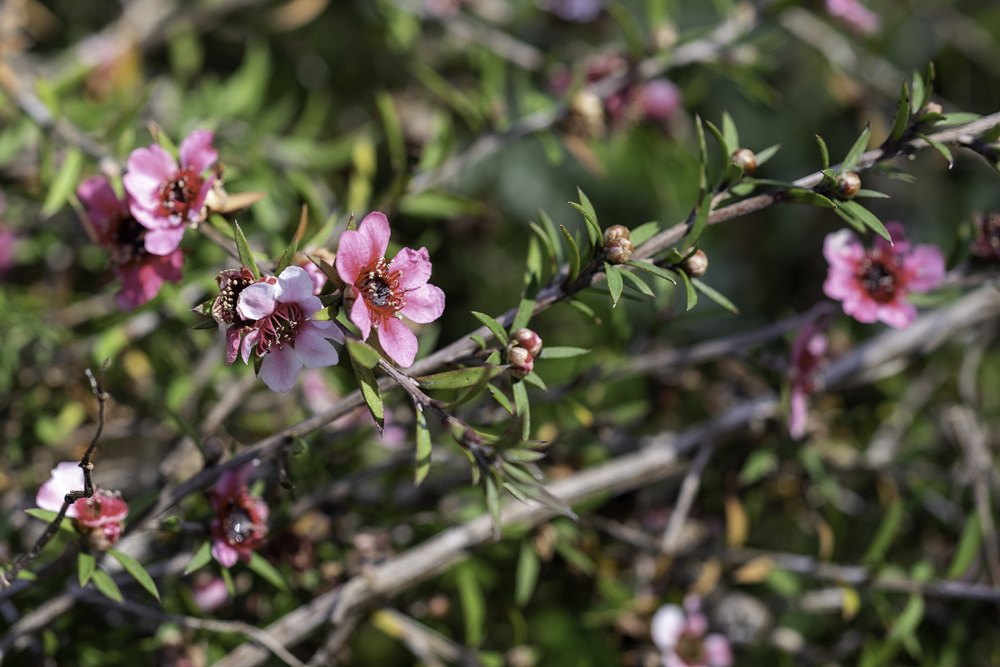
General Information:
Information on Leptospermum is taken from Lesniewicz’s “Bonsai in Your Home,” and Resnick’s “Bonsai,” with lots of additional information supplied by posts from Scott Barboza, Brent Walston, Fred Arnold and Iris Cohen, and my own Herculean efforts.
Leptospermum has the reputation of being the ultimate in forbidden bonsai. It is a lovely tree, with flowers which resemble tiny wild roses and spiky little evergreen leaves. The bark looks old rapidly, although it may take a while to thicken the trunk. Unfortunately, getting it to survive is a monumental task. These trees are native to New Zealand, Malaysia and Australia, but are now often found as hedge plants on the west coast of the US. The best bet for bonsai is Leptospermum humifusum, which is all- around tougher than the rest of the species. It is, however, reputedly harder to get to flower than other Leptos.
Lighting:
Needs lots of light. If kept indoors, requires a very bright location for survival. It does not respond well to fluorescent grow lights.
Temperature:
Never below 20F, but prefers it a bit cool in winter, 55-60 F. Keep in an airy location and keep away from heat sources. Can be kept indoors, but it is a challenge due to its light and air requirements. Hardy to zone 9.
Watering:
Keep uniformly moist. Leptos are touchy about watering. Lack of water is the easiest way to kill them - they do not wilt, but go from healthy to dead in a matter of hours. To make matters worse, they are also subject to root rot. Water when the soil dries slightly on the top, and keep your fingers crossed until you get the hang of it.
Feeding:
Use an acid fertilizer, such as Miracid. Fertilize infrequently with a very dilute solution, as they burn easily.
Pruning and wiring:
Suitable for most styles, but only L. humifusum makes a good cascade. Leptospermum has excellent mame potential, due to the naturally miniature leaves and flowers. Growth should be pinched back as needed. Care is needed when pruning, as these trees rarely bud back on old wood. Cutting back past the leaves will probably result in major branch die-back. L. humifusum is an exception - it will stand severe pruning. Leptospermum responds well to wiring, but repotting, pruning and wiring must be done at different times, or the tree will be over-stressed.
Propagation:
Take softwood cuttings during the growing season, July is usually a good time. Leave the terminals intact and take a short cutting of new growth about two or three inches. This new wood will be red, wood that has already turned brown will take very much longer to root. Protect against drying out, these cuttings will be very succulent. A poly tent or other cover will be necessary absent automatic mist. A low hormone is beneficial, rootone will work, I use Hormex number 3, which is 0.3% IBA. They should start rooting in ten days to two weeks.
Repotting:
Lesniewicz recommends very light root pruning only. The cumulative experience of the group suggests that this may be the bonsai understatement of the century. Avoid root pruning as long as possible. When the job can no longer be put off, shave off a thin slice from the bottom and repot. Do NOT try to untangle the roots. Treat with kid gloves for a few weeks. Next year, shave off a thin slice from one side of the root ball. The root mass can be reduced gradually in this fashion. Or sidestep the issue entirely by simply shaking off the old soil and repotting in a larger pot! Some recommend repotting in late winter before new growth starts. Others report more success repotting only in May or June. Plant in a well-drained mixture of sand, soil and humus. L. humifusum will stand far more root pruning than the species.
Pests and diseases:
No pests have been reported, perhaps because it doesn’t generally live long enough to fall prey to them!
Some species suitable for bonsai:
Leptospermum attenuatum: tea tree.
Leptospermum flavens: tea tree.
Leptospermum flavescens: tea tree.
Leptospermum humifusum: A white flowered, naturally arching variety which makes a good cascade or weeping bonsai. It is more hardy than the species - to 0F - and also much more tolerant of branch and root pruning.
Leptospermum laevigatum: Australian tea tree.
Leptospermum myrtaceae: Australian tea tree.
Leptospermum petersonii: tea tree.
Leptospermum scoparium: New Zealand tea tree, Manuka, tea tree, Australian myrtle.
Leptospermum scoparium ‘Kiwi’: A dwarf variety with pink flowers and very tight foliage that is more cold hardy than the species. Most useful for accent plants or mame.
Compiled by Sabrina Caine
Malpighia sp.
Common Name:
Malpighia
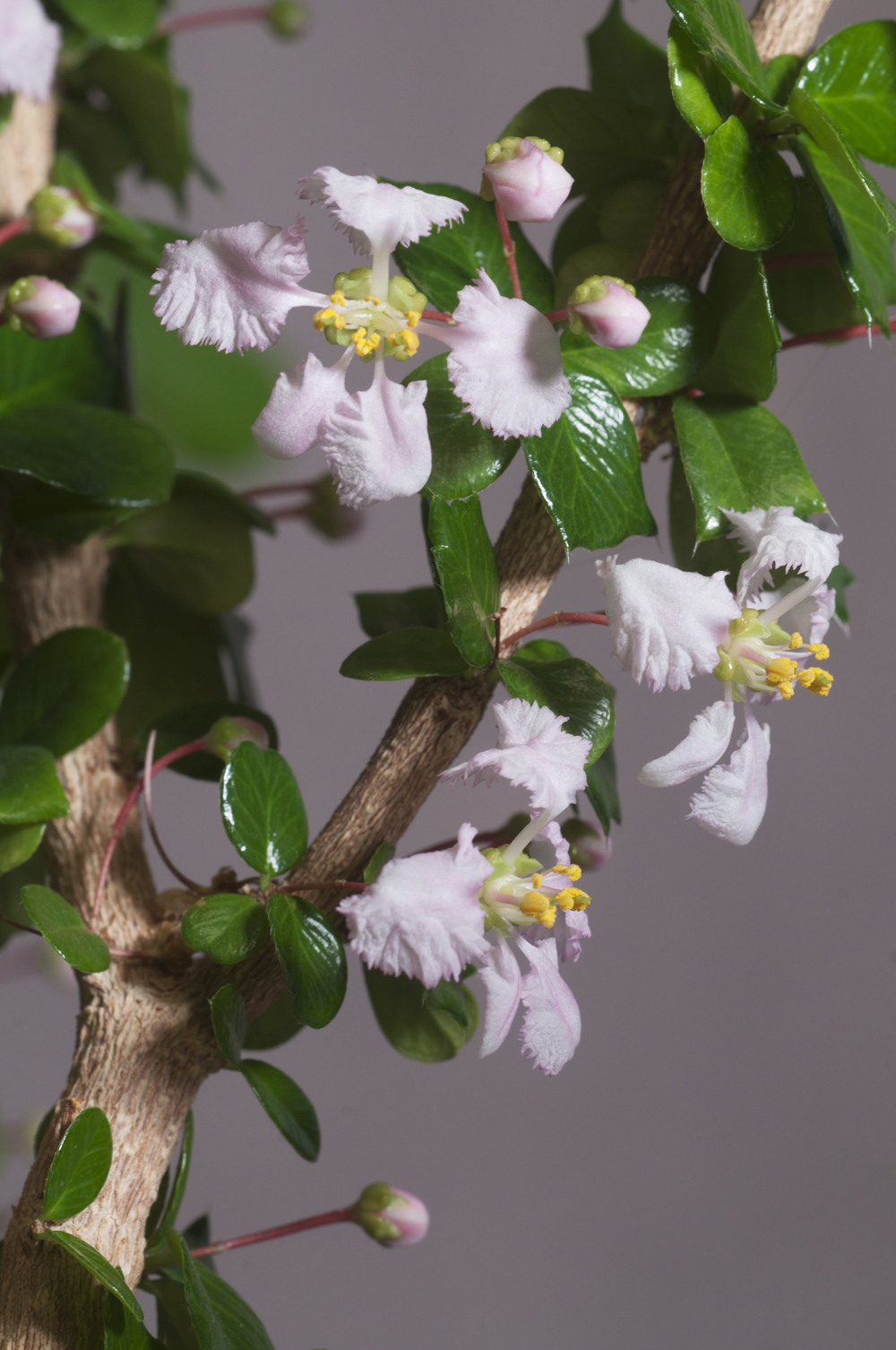
General Information:
The name, Malpighia, is used to honour Marcello Malpighia (1628 1693). He was a distinguished naturalist at Bologna, Italy. Malpighia are related to Barbados cherry and Surinam cherry. Dwarf shrub, evergreen opposite short petioled, spiny toothed leaves. Open, pink flowers and red fruit. There are three varieties of malpighia which are used as bonsai subjects. Each has unique characteristics.
In their native tropical American environment, they may be found in the under story of tropical forests or on rocky hill sides near streams where the soil is rich and moist. Plants may be obtained by collecting during the summer months, but can also be purchased from a nursery or started from seed, hard or soft wood cuttings or root cuttings taken in the summer.
Lighting:
Five hours of sunlight in the morning during the winter is ideal and in the summer they can have filtered sun or shade. If growing them under fluorescent lights, they require 14-16 hours of light a day.
Temperature:
Malpighias are sub-tropical, so temperature below 40 degrees may damage the leaves and freezing will kill the bonsai. To set flower buds, the night temperatures must be above 60 degrees.
Watering:
Do not let a malpighia completely dry-out. However, over watering causes yellow leaves, and so does too much sun. And, water on the blooms ruins them.
Feeding:
Fertilize once a month with a weak solution of fish emulsion or Peters water soluble fertilizer. Just before a flower show or exhibition, it may be fertilized more frequently. Malpighias are not salt tolerant.
Pruning and wiring:
Limb structure may be difficult to develop on Malpighia coccigera as they continue to produce growth all along the trunk. The clip and grow method (allowing desirable twigs to grow overly long before pruning back) works well. Keep unwanted growth rubbed off or pinched back. Malpighia pendiculata does not bud back easily on old wood. Regular pinching is necessary.
Propagation:
Cuttings, layering.
Repotting:
They prefer a slightly acid (pH 5.5 to 6.5) rich, moist but porous, well drained soil, Peat moss, garden soil, leaf mould and sharp sand in equal amounts is a good soil mix. The soil should be pasteurized as malpighias are highly subject to nematodes.
Pests and diseases:
Watch for aphids and spider mites.
Some species suitable for bonsai:
Malpighia coccigera, known as Singapore holly, southern holly, Florida holly, or miniature holly and is native to the West Indies. Its pink, about the size of a dime, five fringed petals. Tip pruning does not sacrifice bloom. Blooms are all along the branch. Mature growth is woody, with grayish, bark, somewhat stiff in character. New growth tends to be horizontal. The Singapore holly lends itself to a variety of styles, including root over rock.
Malpighia glabra, or Barbados cherry is native in southern Texas, the West Indies, northern South America, Central America and Mexico. Its natural form is that of a shrub or small tree 10 to 15 feet tall. It has leaves which are oval with pointed ends, neither glossy nor leathery, very dark green and small in size. Branches are flexible, the flower is rose-pink and the fruit is edible, a rich source of Vitamin C. Barbados cherry usually looks best in an informal upright style.
Malpighia pendiculata or weeping malpighia. Its natural form is that of a low shrub with pendulous, weeping twigs and branches. The flowers are rose-pink, often several together in a cyme. It’s fruit is small and inedible. It has a weeping growth habit, cracked branches will heal, and leaves are pointed.
Bibliography:
“From the Teacher’s Notebook” by Lois Murrock, Florida Bonsai, XVI, 1:51- 52.
“The Malpighias” by Marian Borchers, Florida Bonsai, VI,3:10-15
Florida Bonsai VI:3:10-15,29-31,32-33
Florida Landscape Plants by Watkins et. al., pg 217
Compiled by Sabrina Caine and Thomas L. Zane
Manilkara sp.
Common Name:
Sapodilla
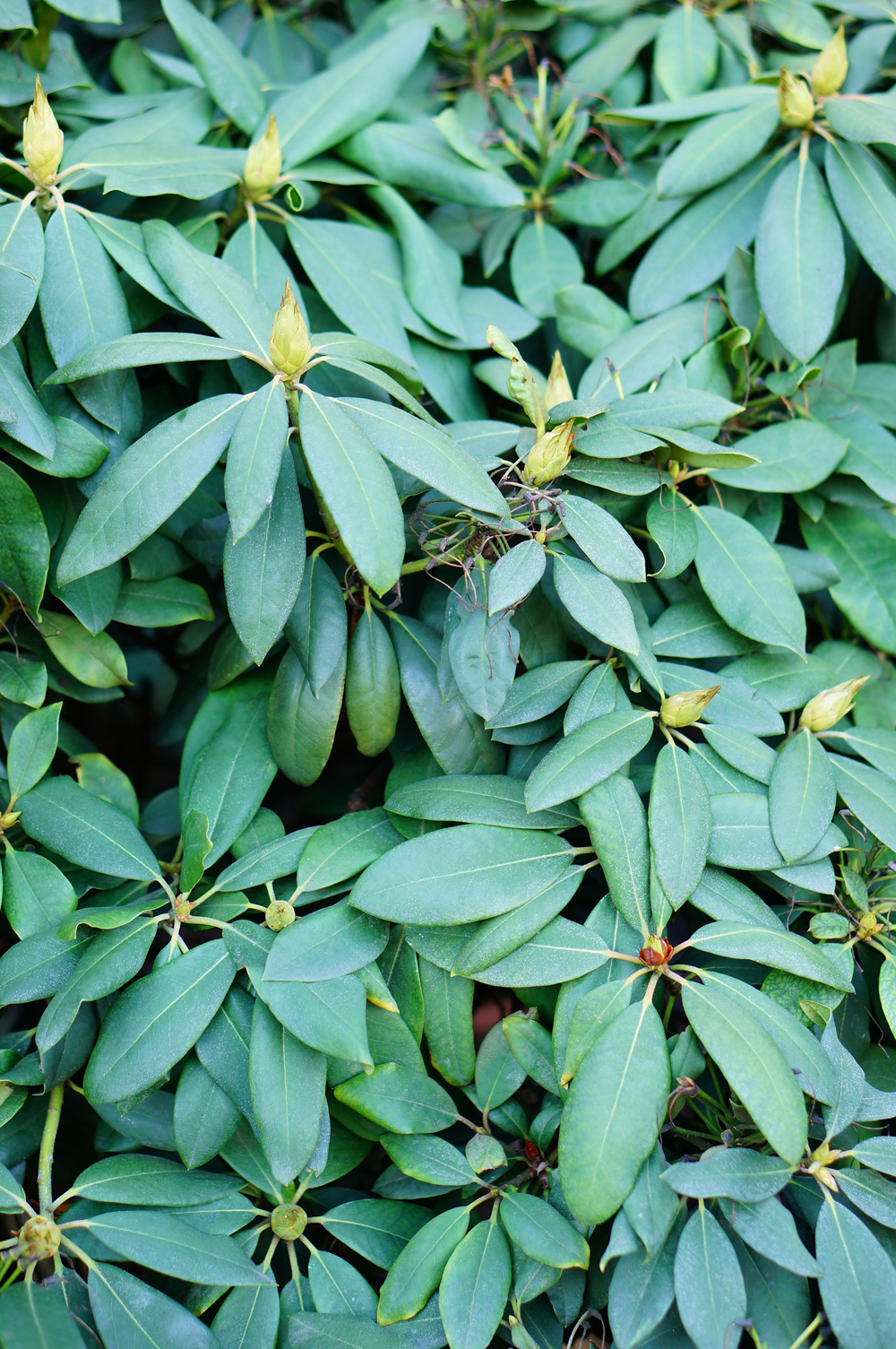
General Information:
A superb shade, street (where falling fruit will not be a problem), or fruit tree, Sapodilla reaches a height of 45 feet with a 40-foot spread. The smooth, dark, and glossy, six-inch-long evergreen leaves are clustered at the tips of twigs and the small, cream-colored solitary flowers appear in the leaf axils throughout the year. The four-inch-wide, scurfy brown fruits have a juicy, sweet, yellow-brown flesh and ripen to softness in spring and summer. The flower-to-fruit period is about ten months. The bark and branches, when injured, bleed a white latex which is the source of chicle, the original base for chewing gum. The trunk on older specimens is flaky and quite attractive, and flares at the base into numerous surface roots.
There are some 85 species of these tropical, fruit-bearing plants. They are also used as ornamentals in the proper environment due to their rounded crowns and glossy leaves. The plant produces a milky latex which is used in chewing gums.
Family:
Sapotaceae
Lighting:
Give plenty of light to this tropical tree!
Temperature:
Zone 10B through 11. A drop below freezing will kill young plants. Older plants can survive to 26F, but it is best to keep these plants warm.
Watering:
Give plenty of water, but insure proper drainage.
Feeding:
Prefers 8-4-8 fertilizer. Advice is to feed garden plants every two months - I assume heavier bonsai feeding is warranted. I might try feeding every two weeks during growth, every six in winter, which is common for other tropicals.
Pruning and wiring:
The plant bleeds milky sap profusely, so beware of drastic pruning.
Propagation:
From seed, and by grafting. Seed grown plants may produce inferior fruits.
Repotting:
Likes well-drained soil. No information how frequently to repot, but the best time for transplanting is in May or June.
Pests and diseases:
Rust, scales and fruit flies occasionally cause problems.
Species suitable for bonsai:
Manilkara bahamanansis (Achras emarginata, Mimusops emarginata). Native to South Florida and the Bahamas, this plants smaller habit (fruit only 3 cm) makes it more suitable for bonsai than the common sapodilla. It has notched leaves and yellow flowers. It flowers in both spring and fall, allowing there to be flowers and fruit on the plant simultaneously. The fruit possesses little edible flesh.
Manilkara zapota (Achras zapota): sapodilla, naseberry, dilly plant. The sapodilla is commonly found as grocery store produce, and can be grown from seed. It has glossy green leaves up to 5 in long which have pointed tips, and white flowers which produce 5-8 cm fruit.
Bibliography:
USDA Fact Sheet ST-405
Compiled by Sabrina Caine Edited by Thomas L. Zane
